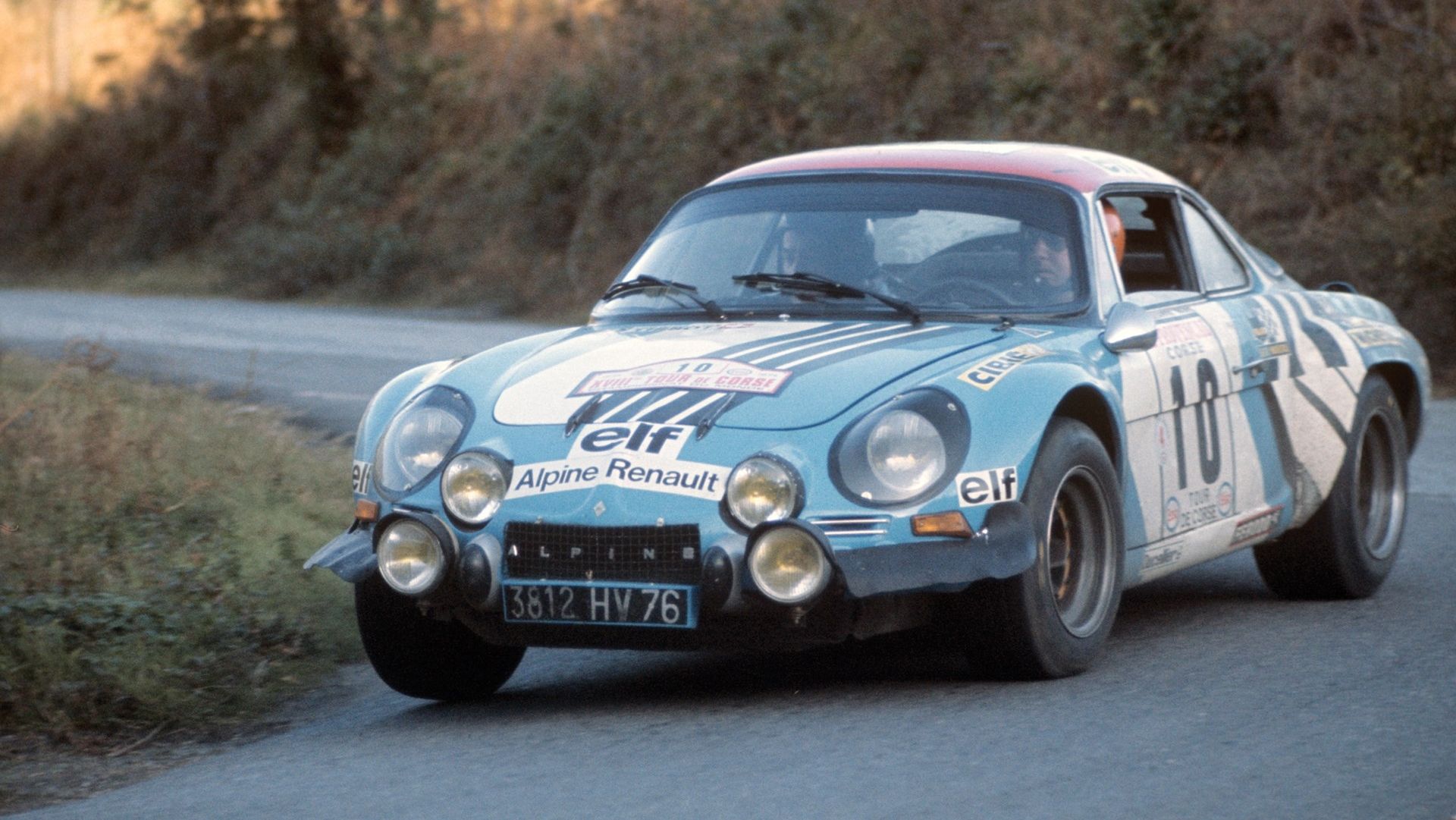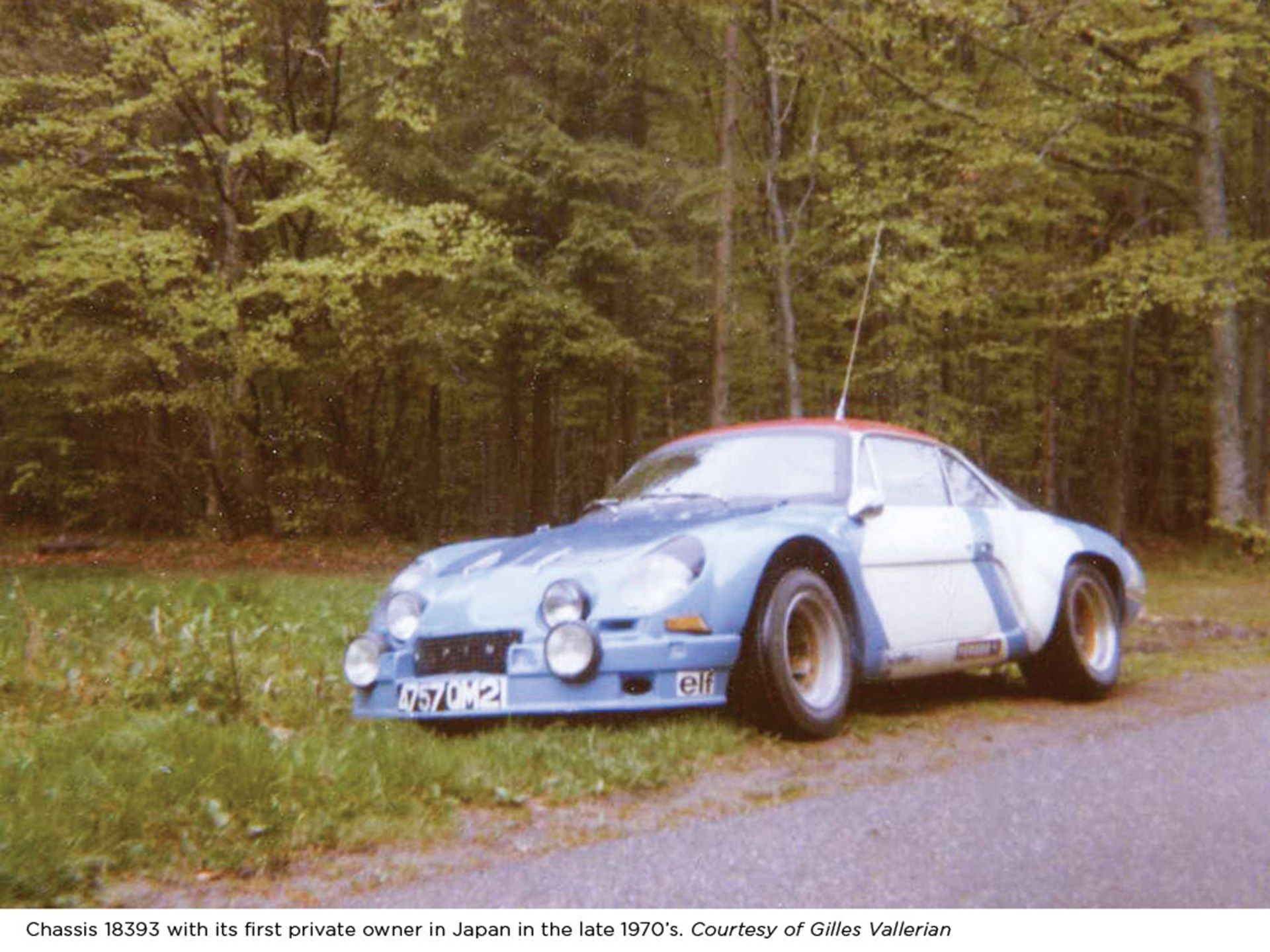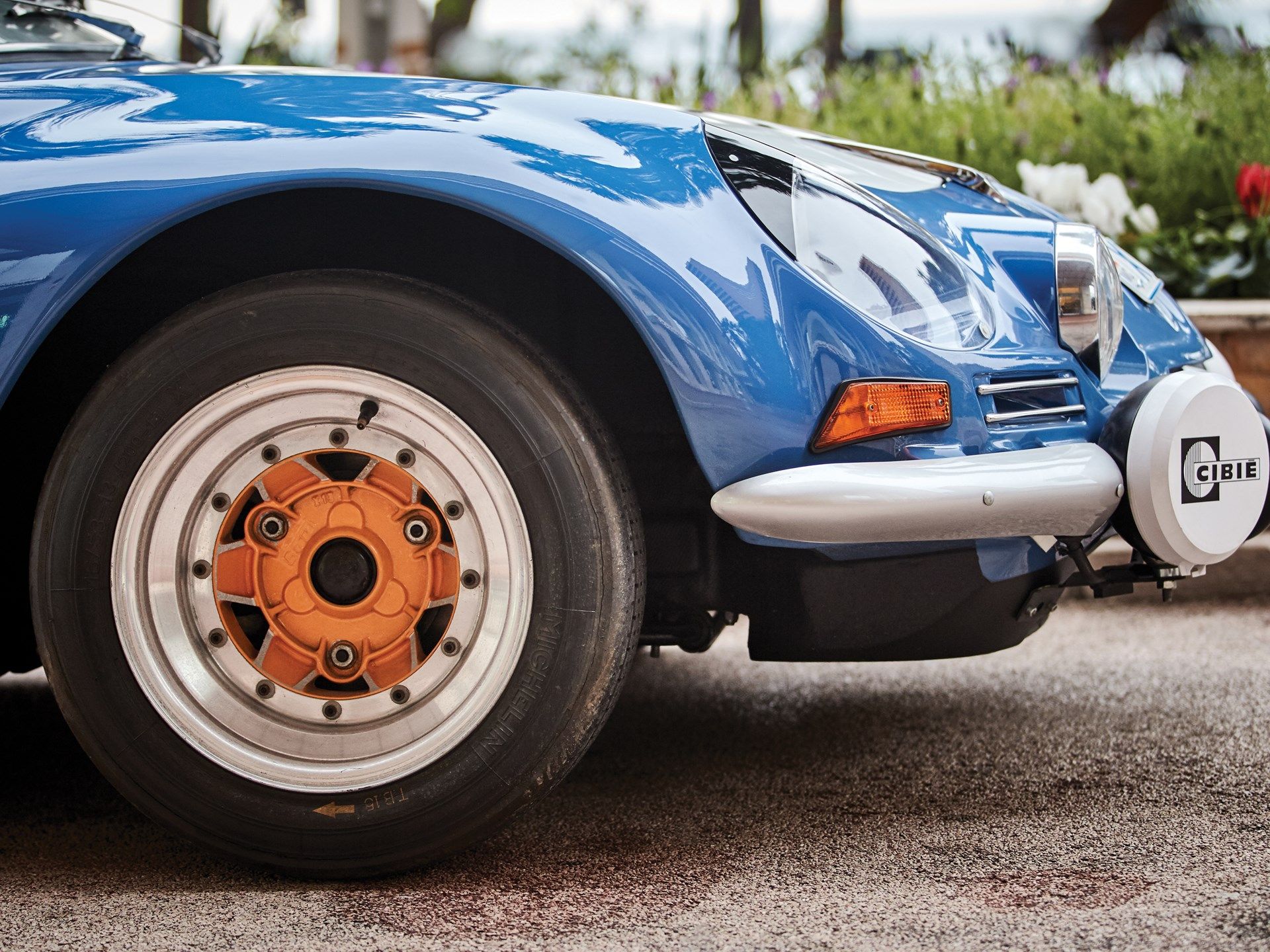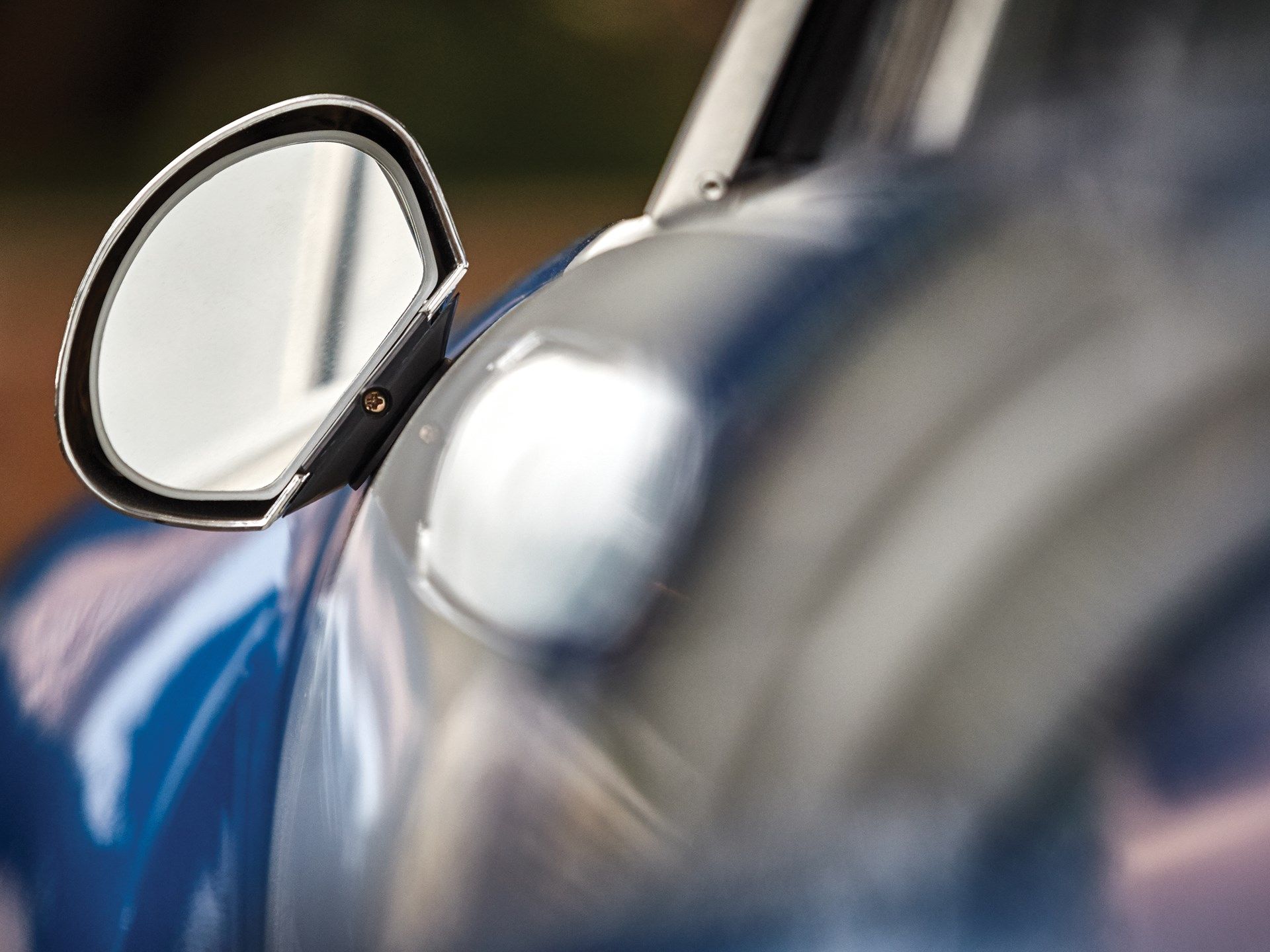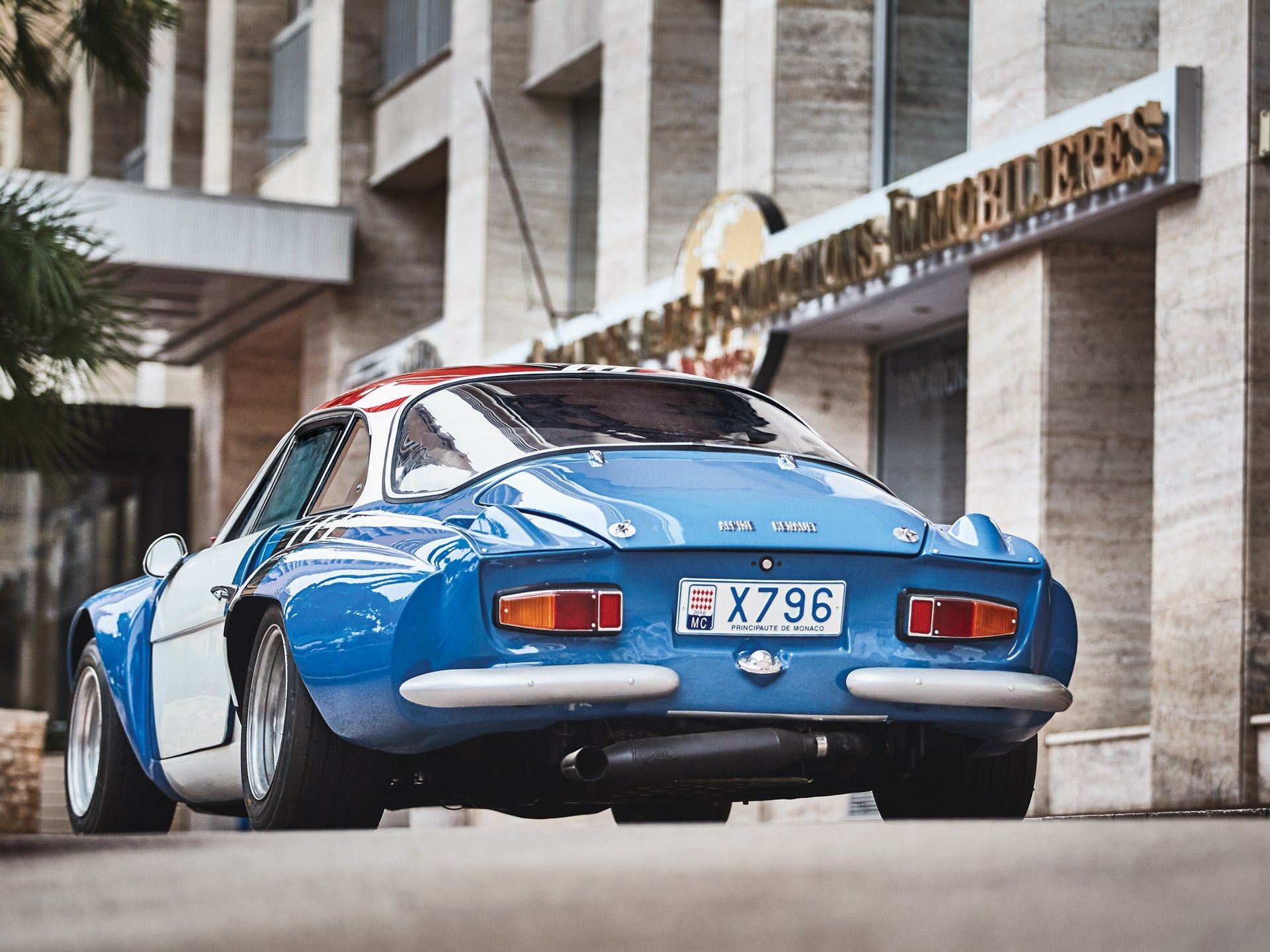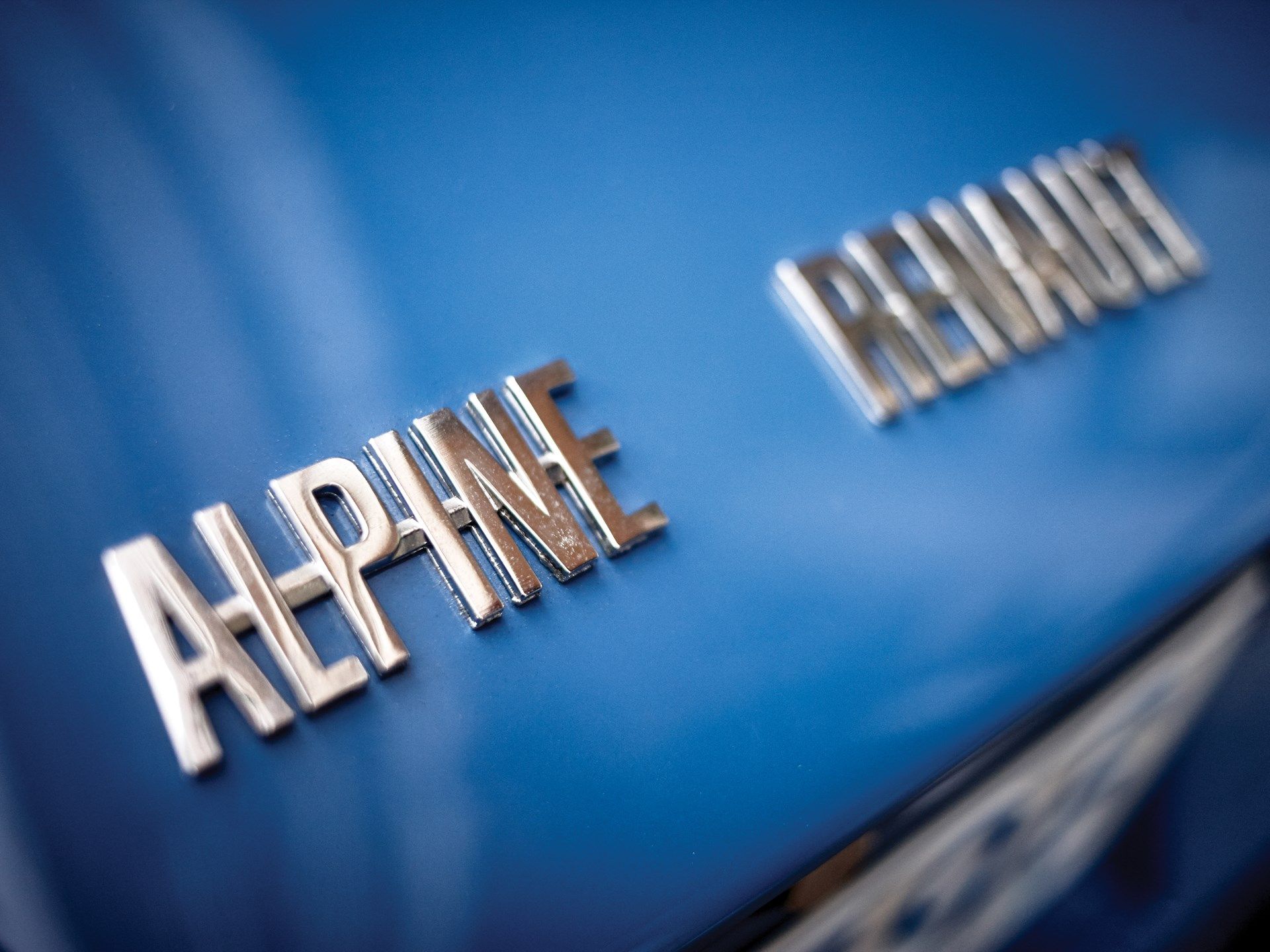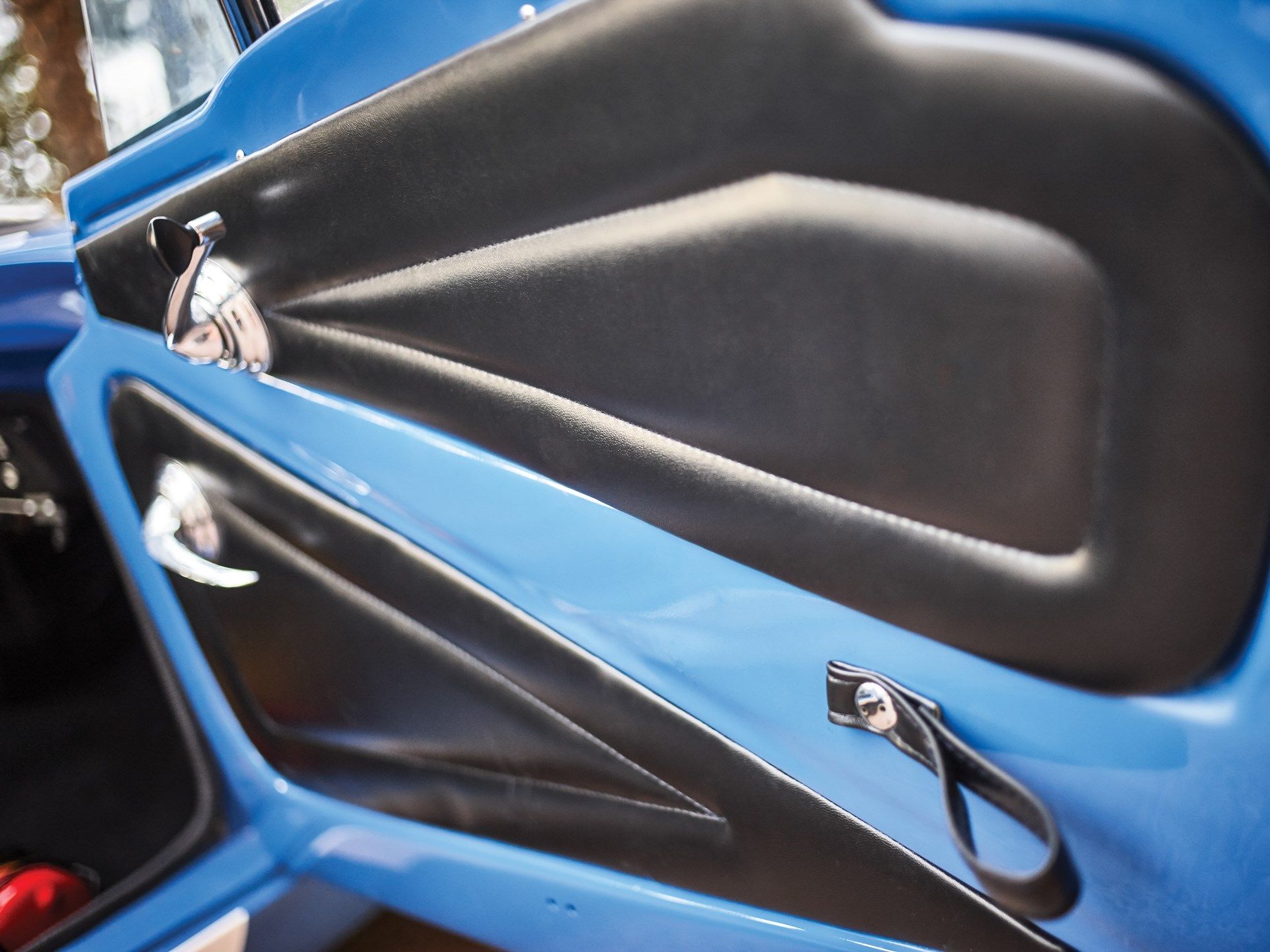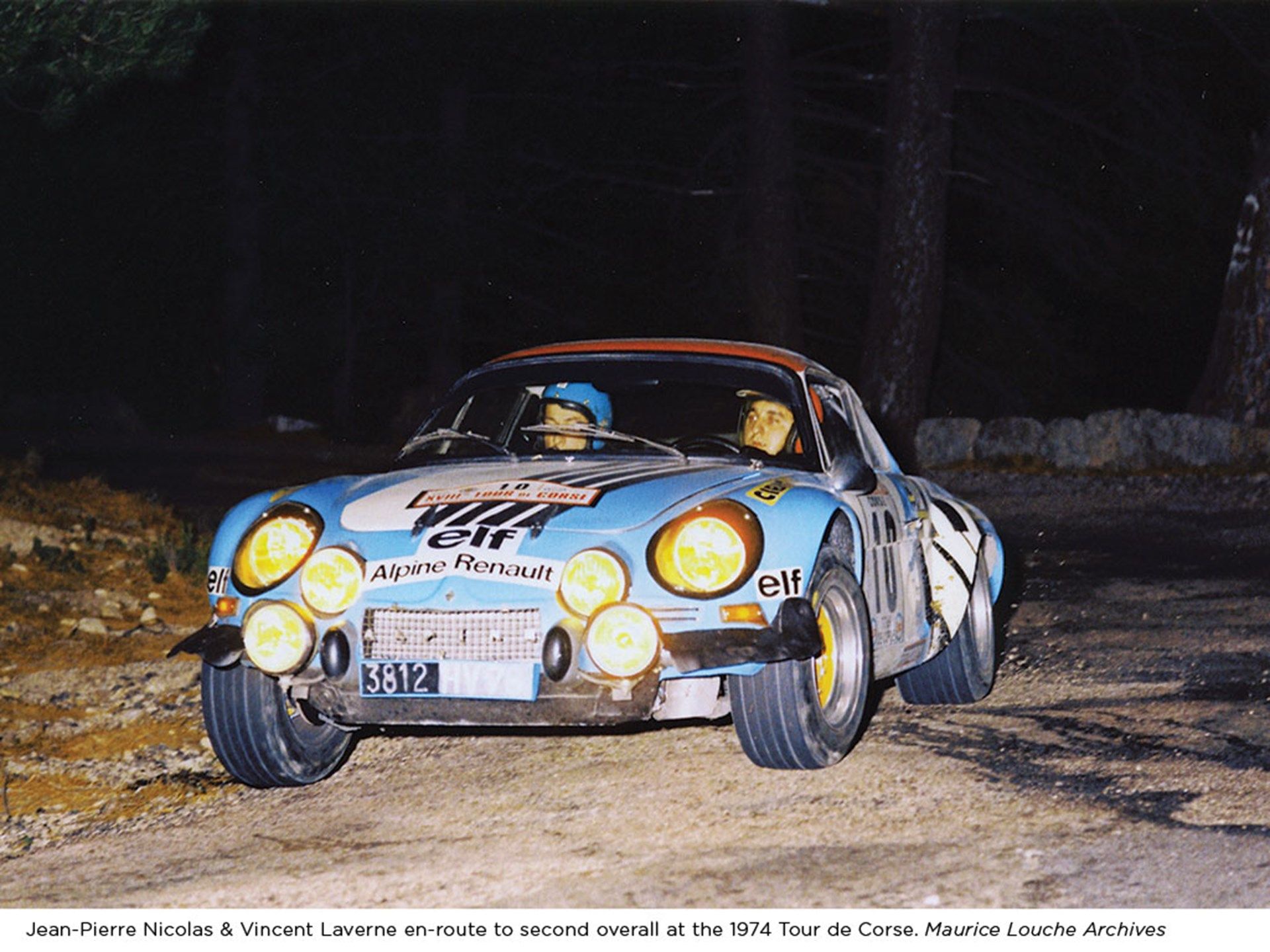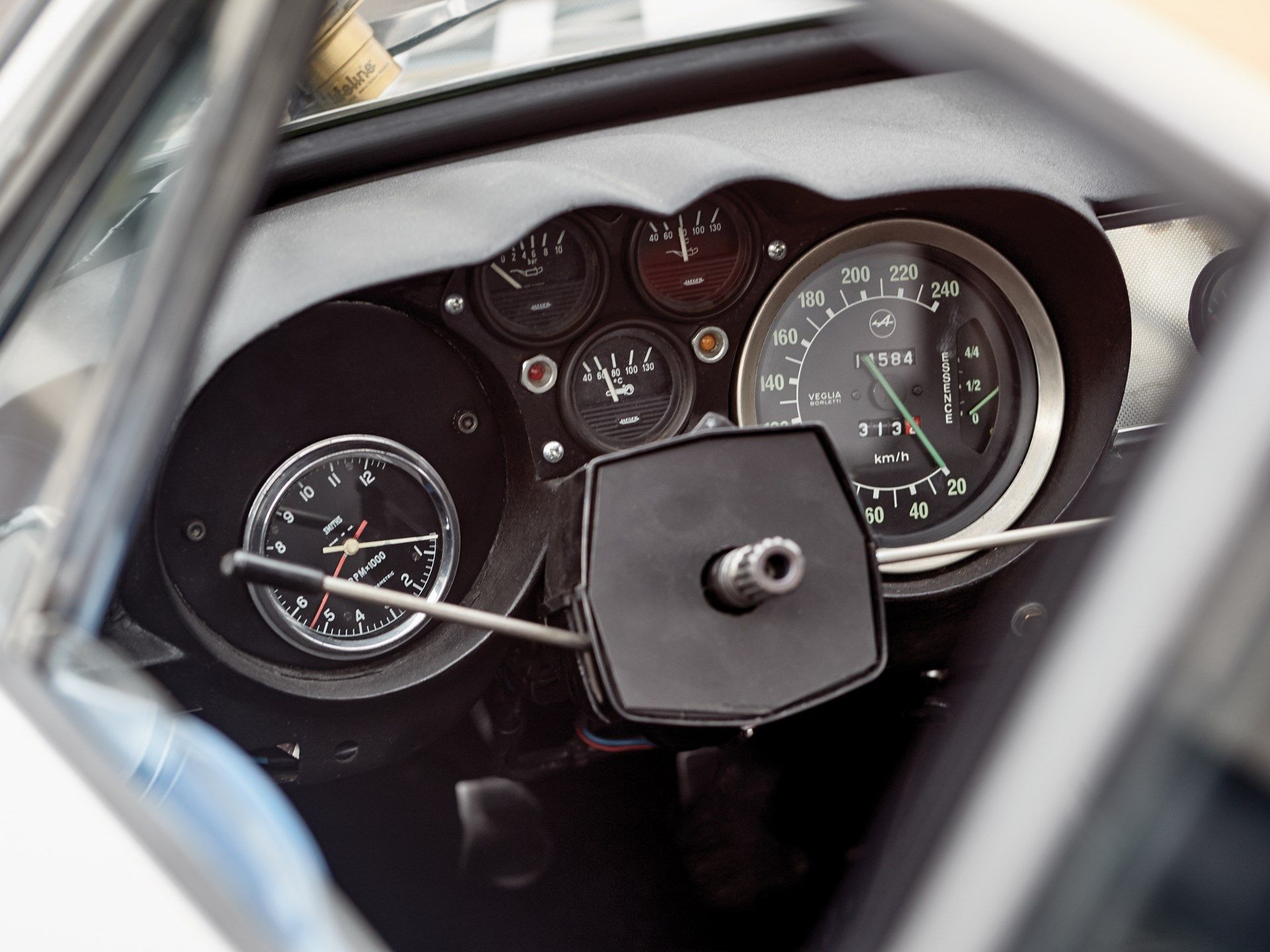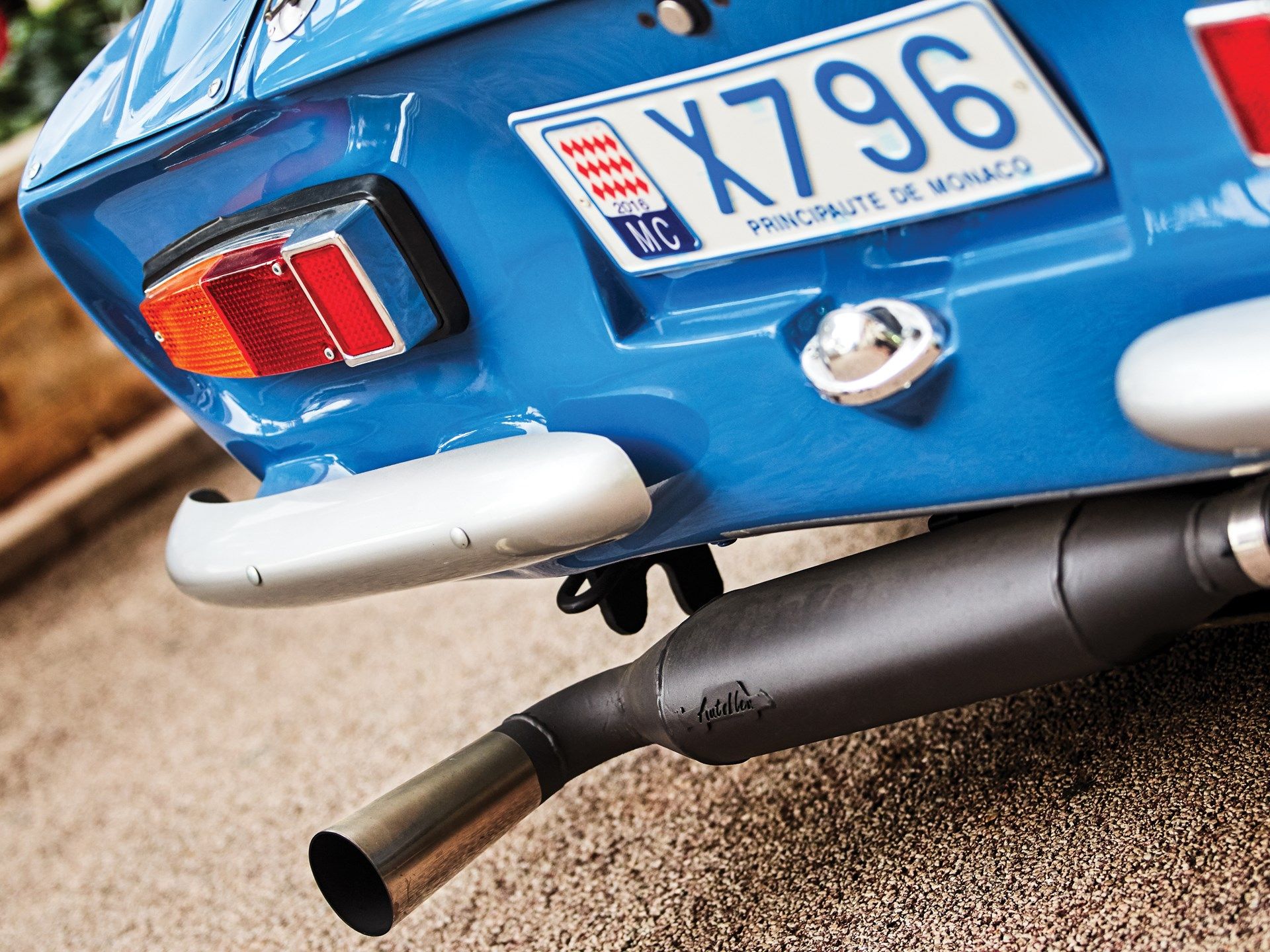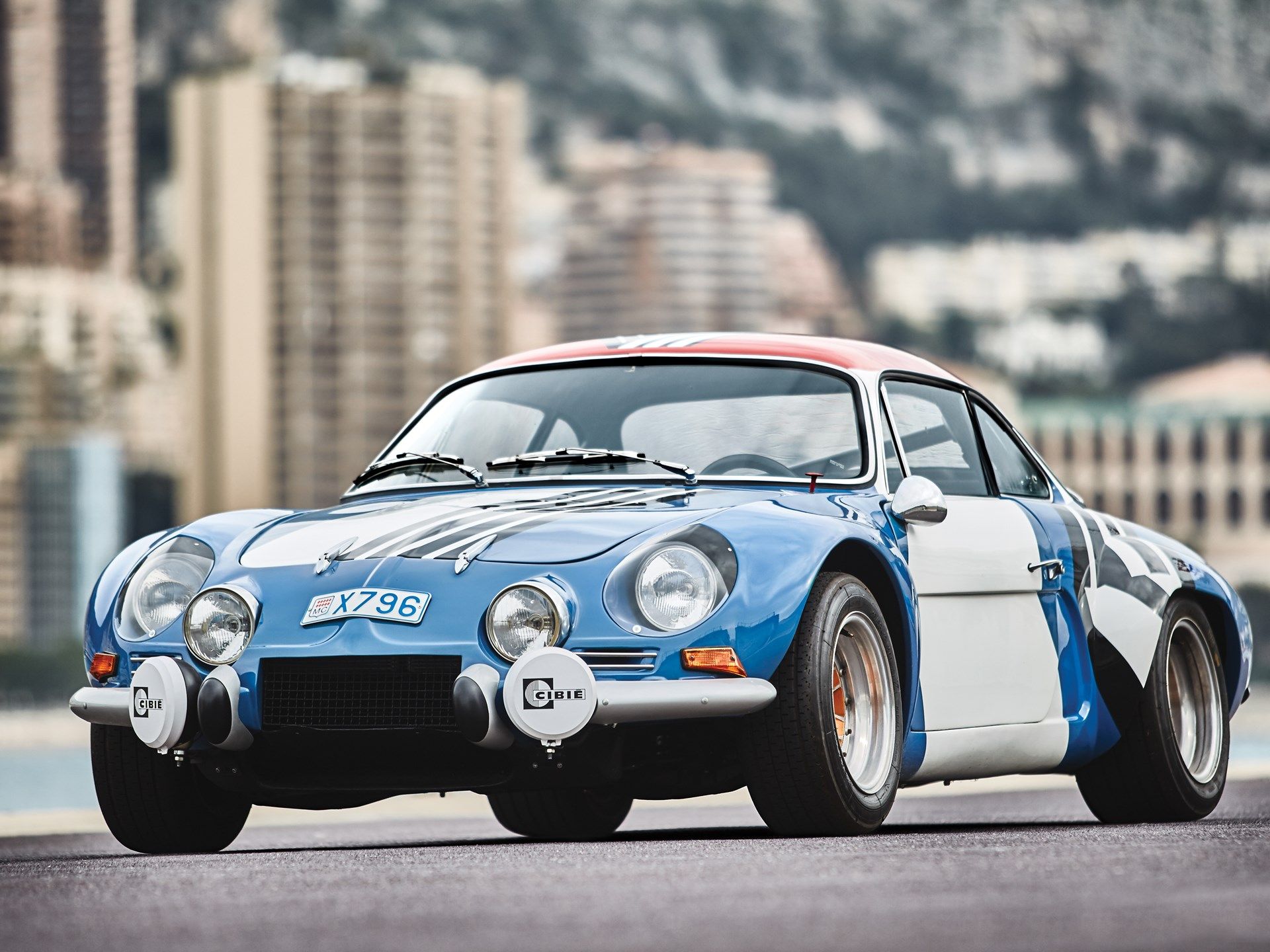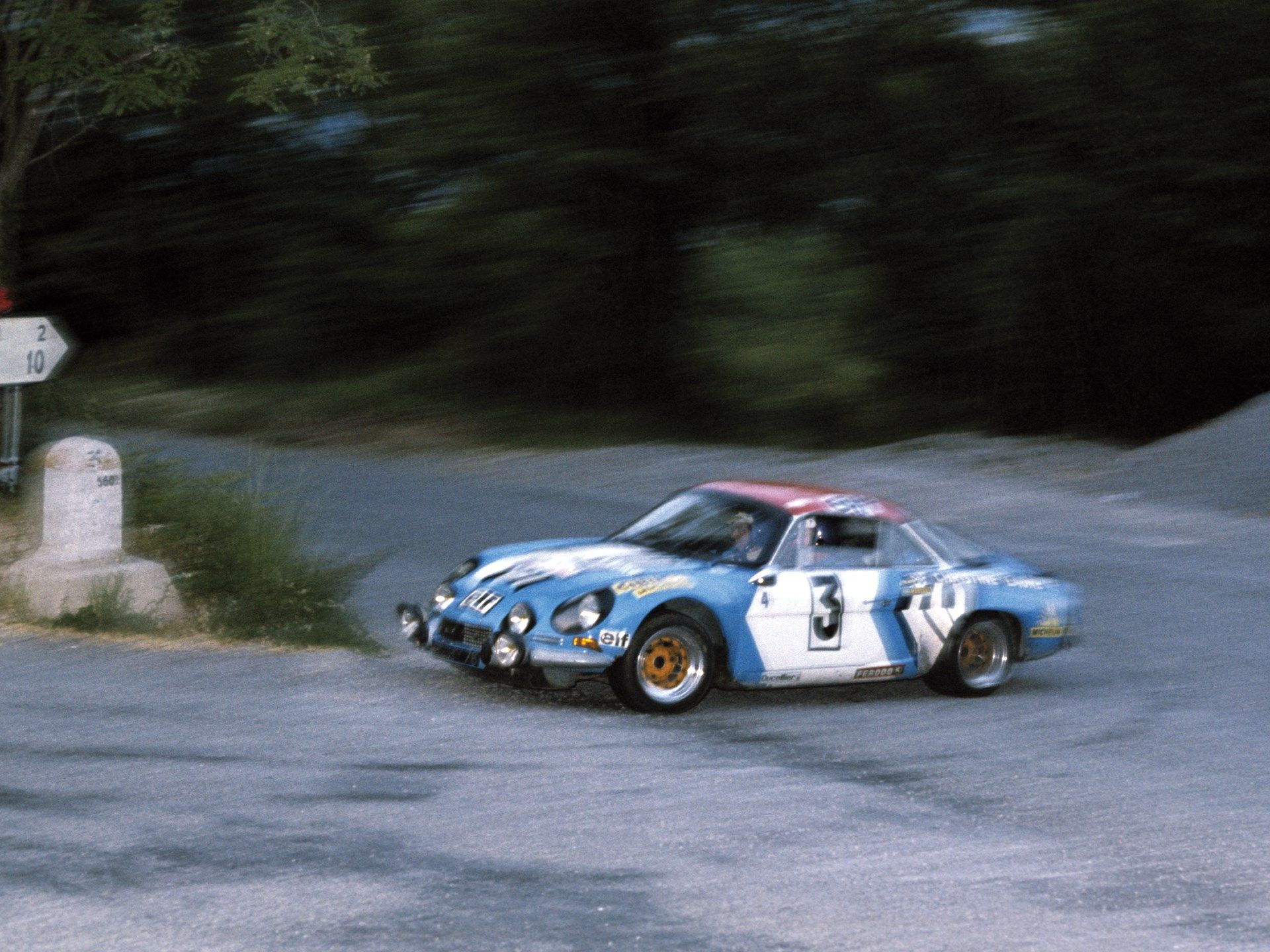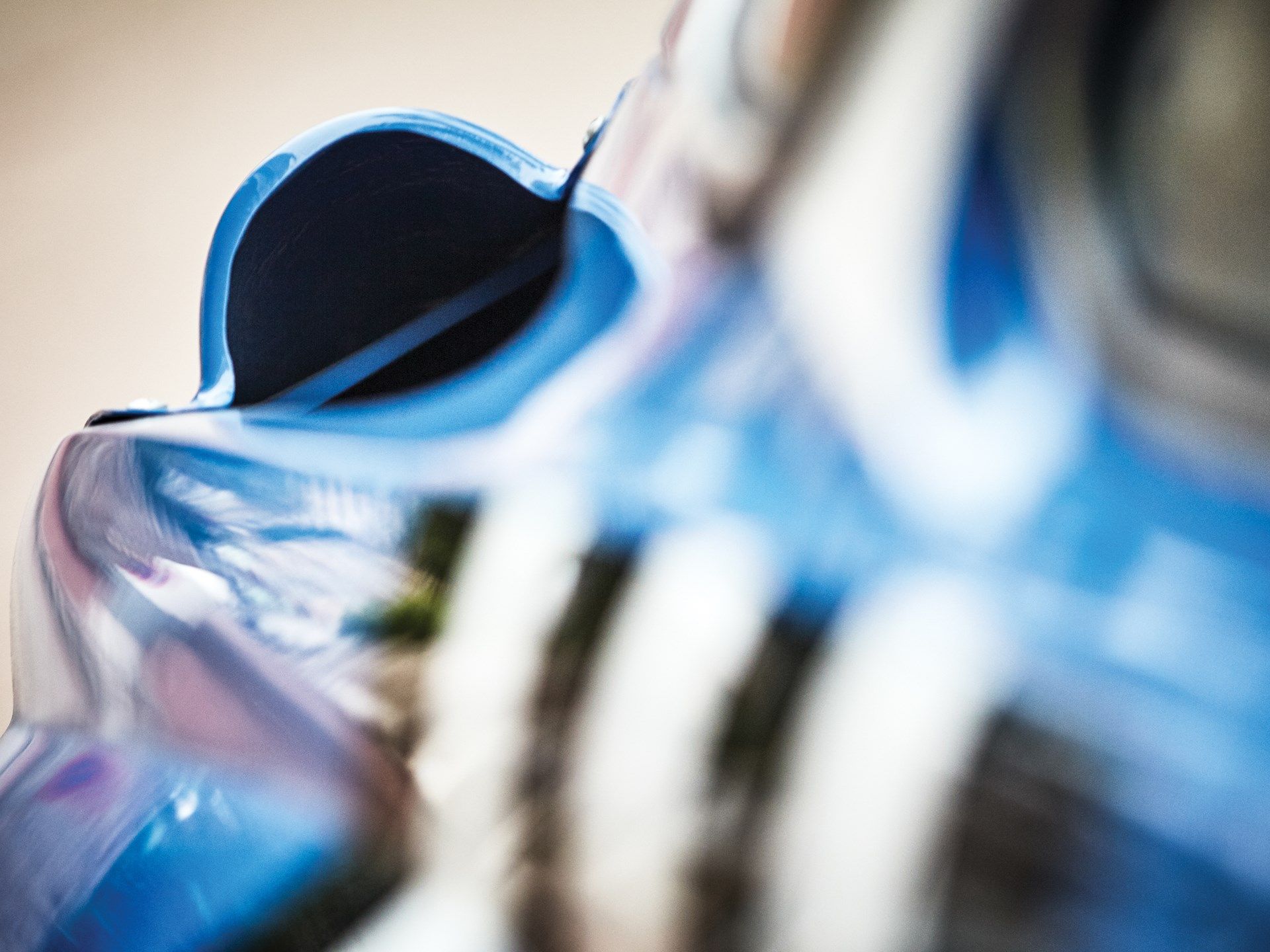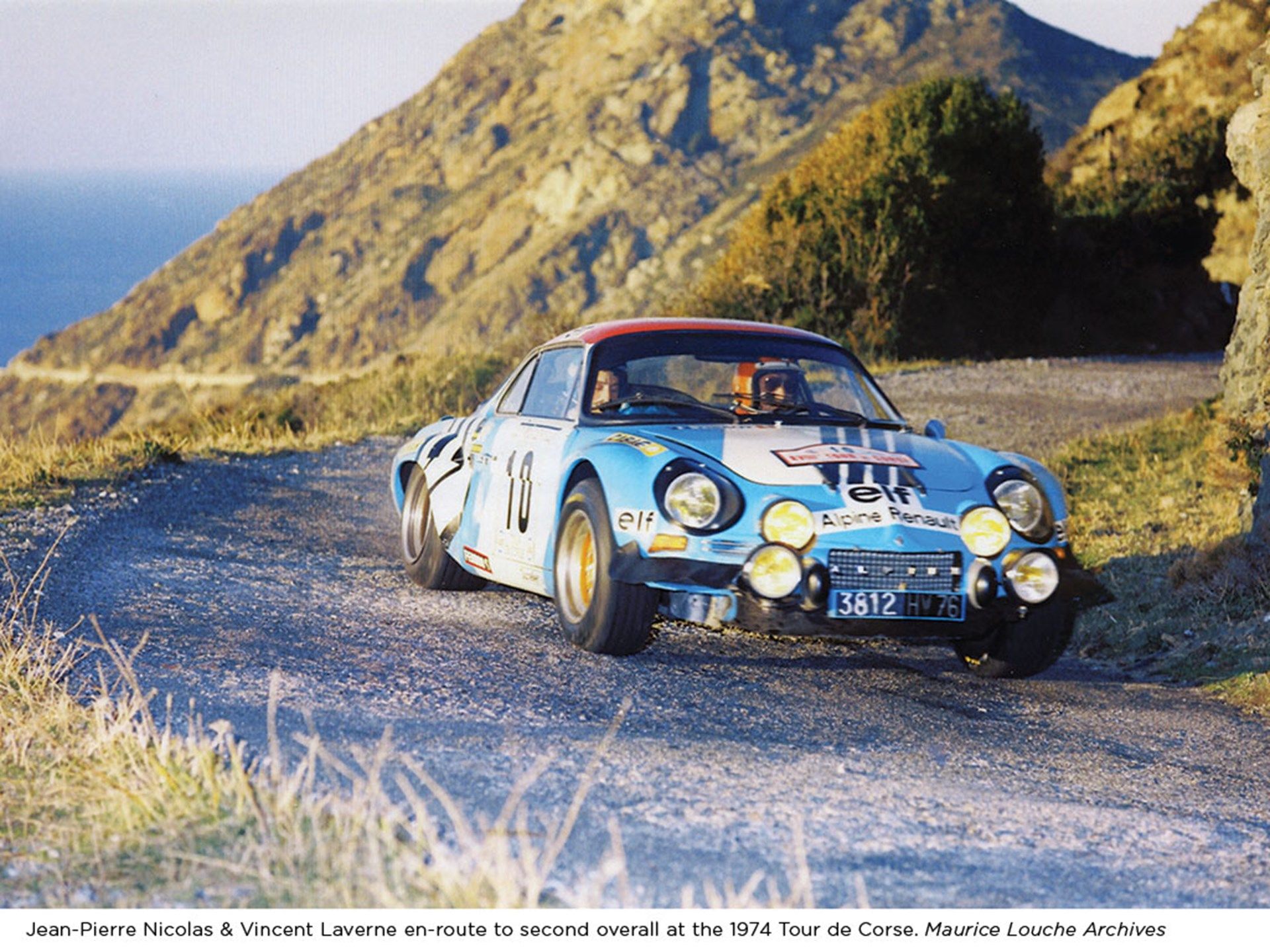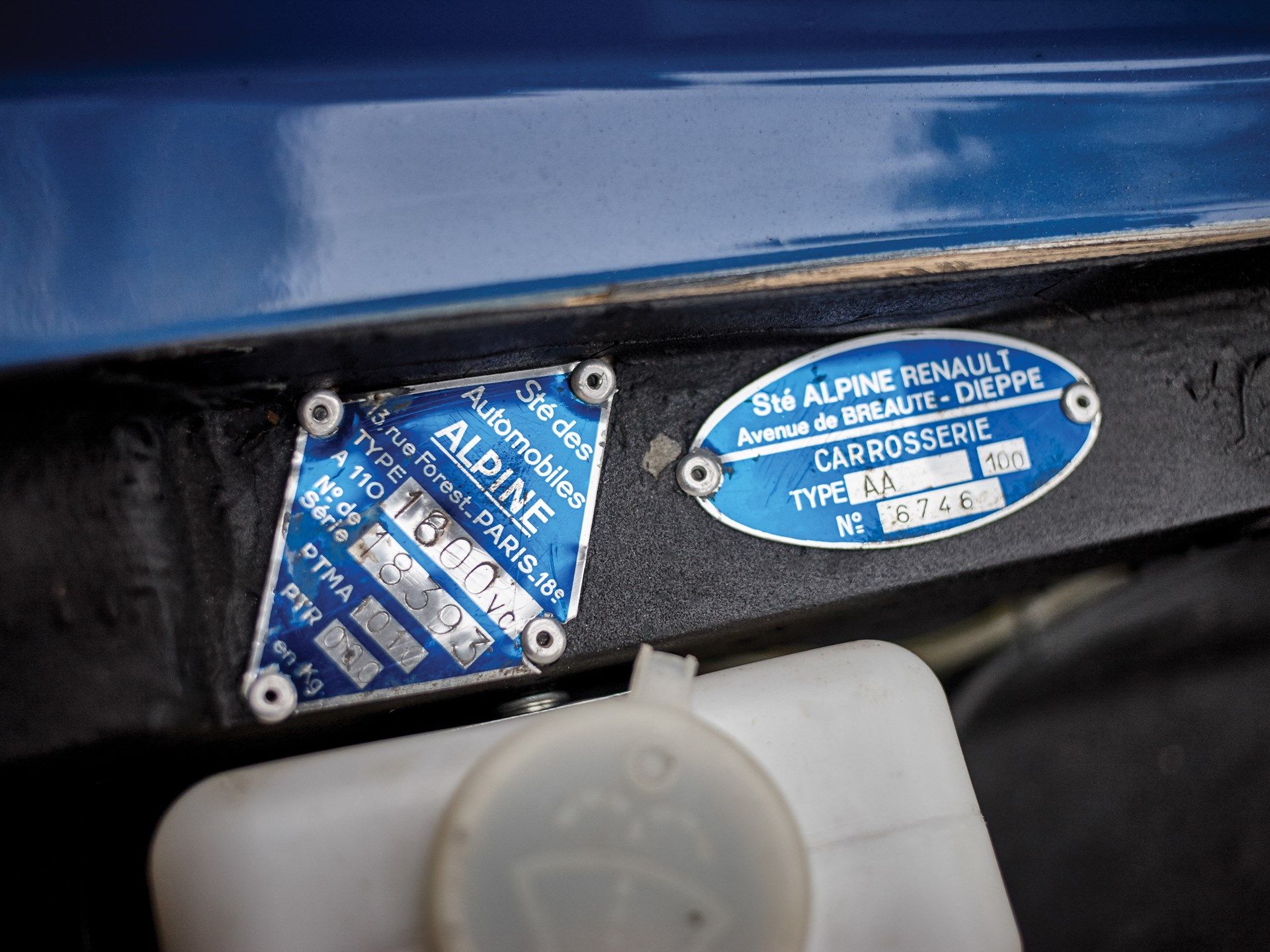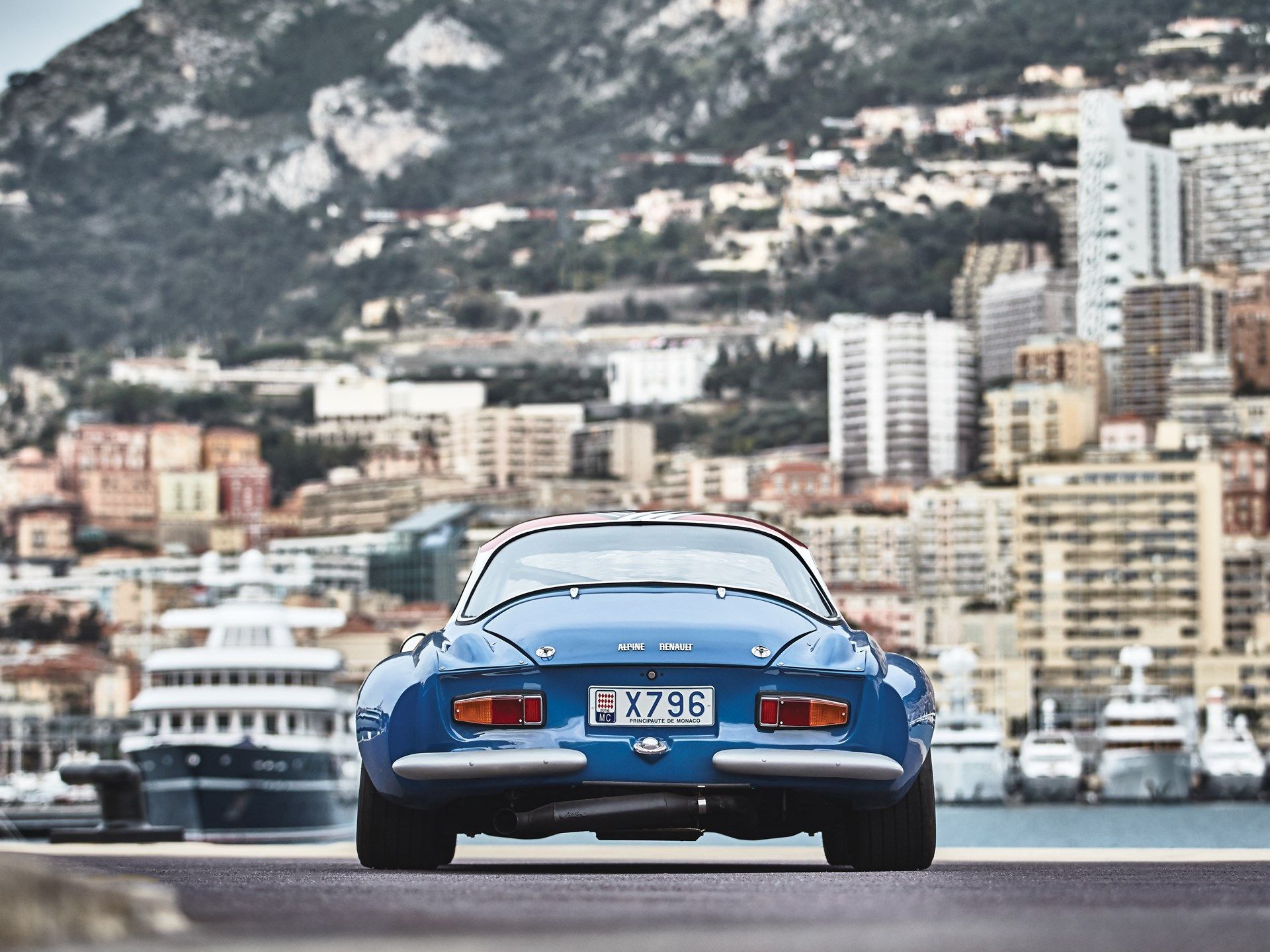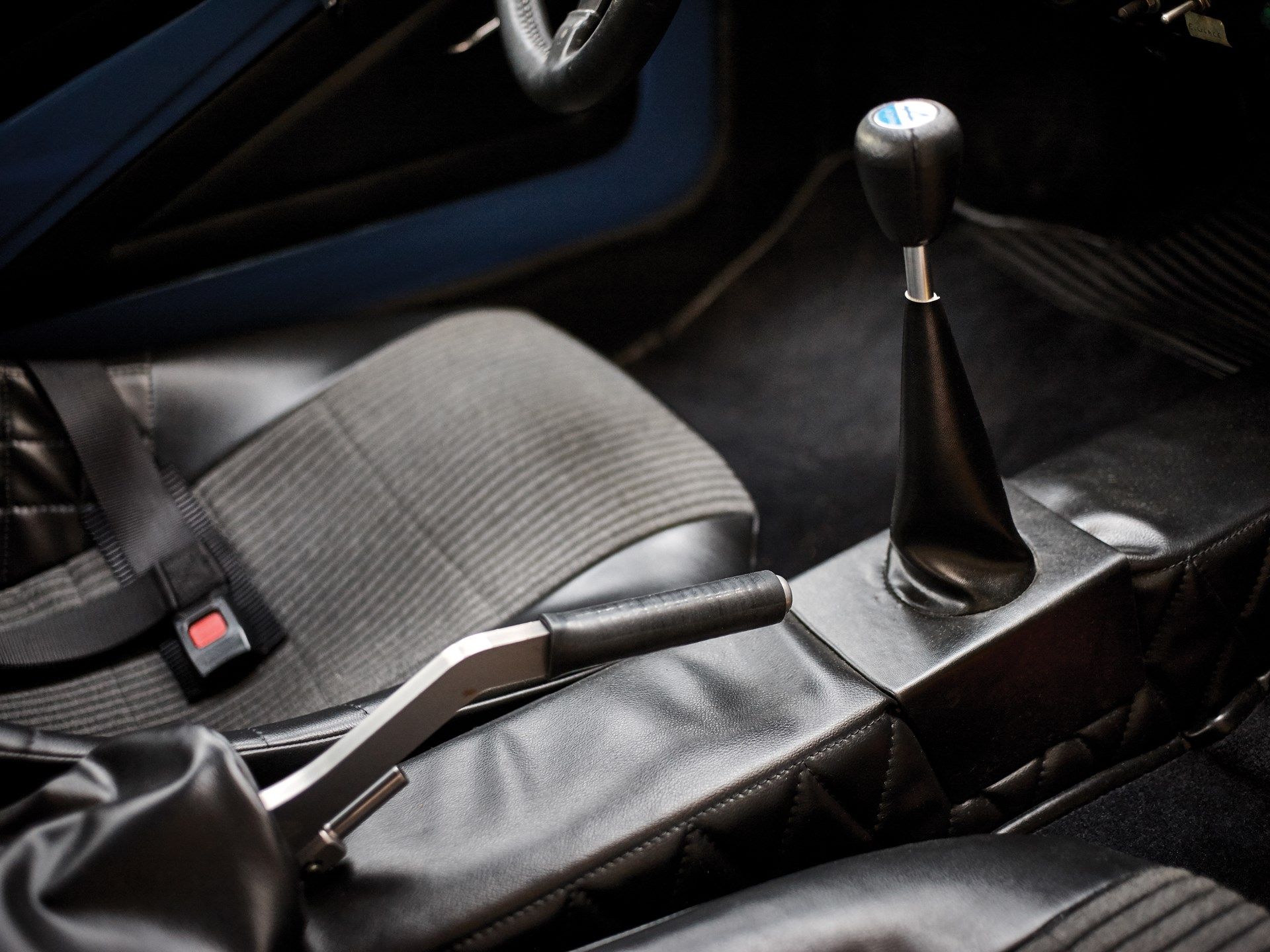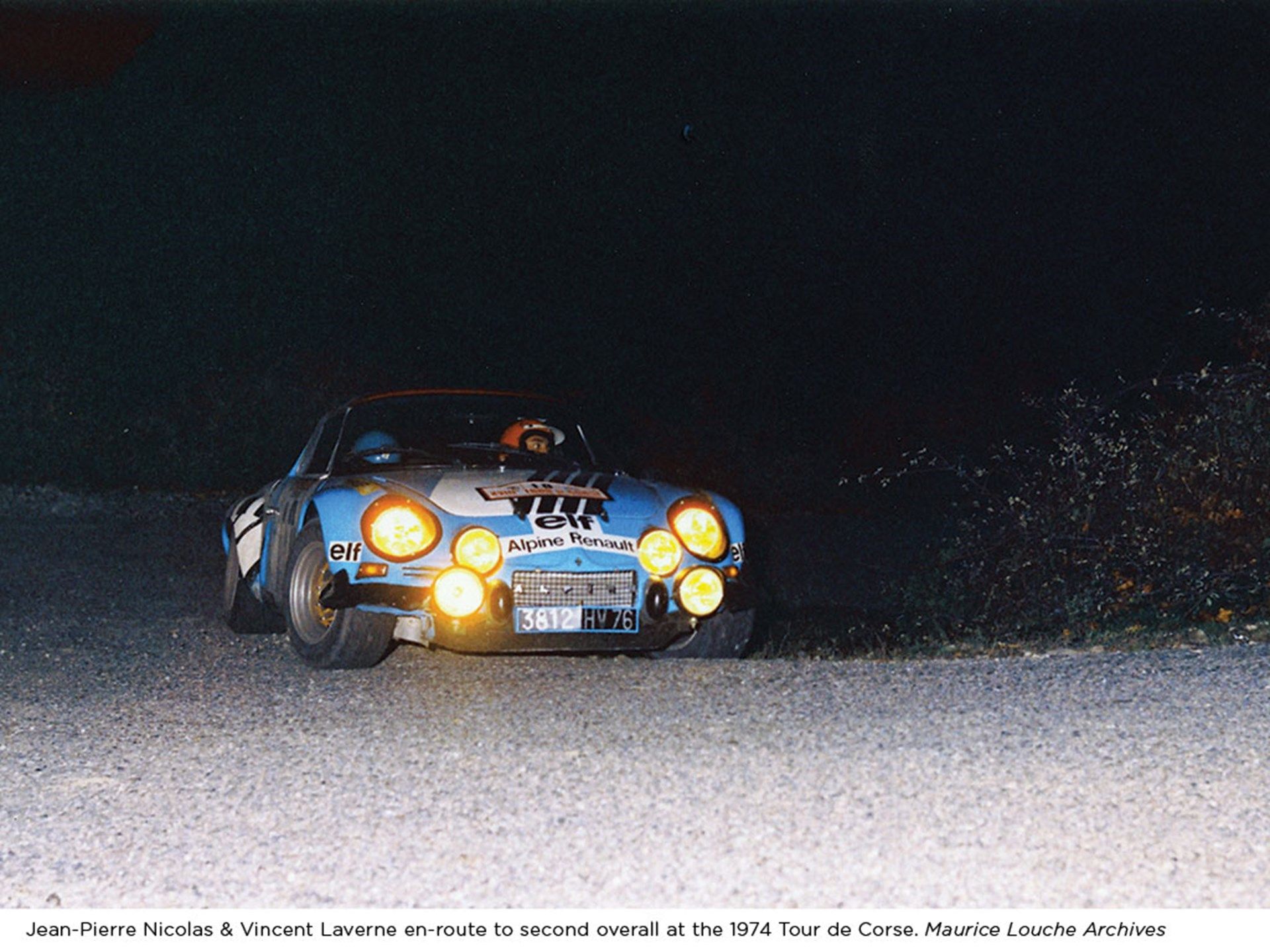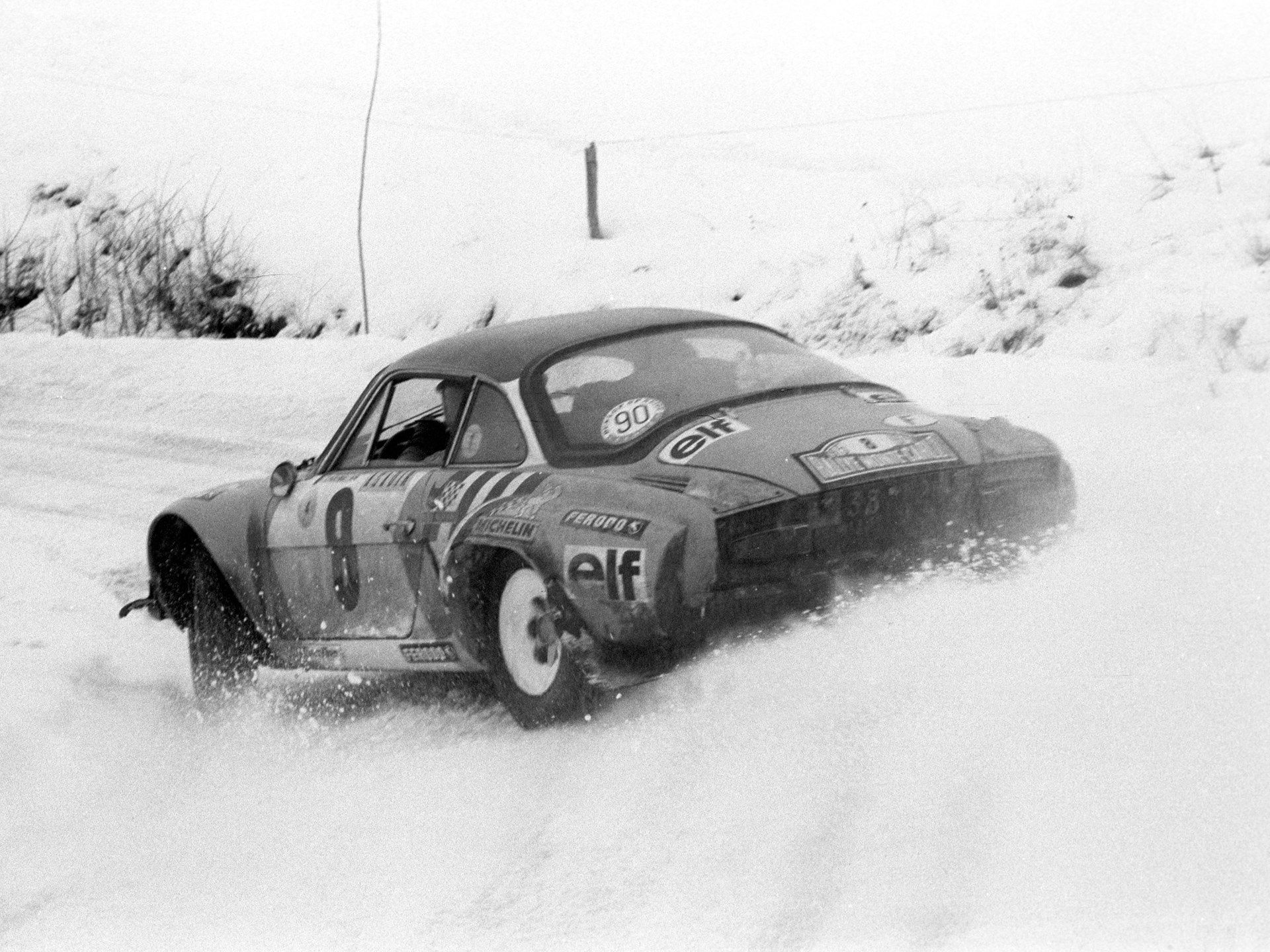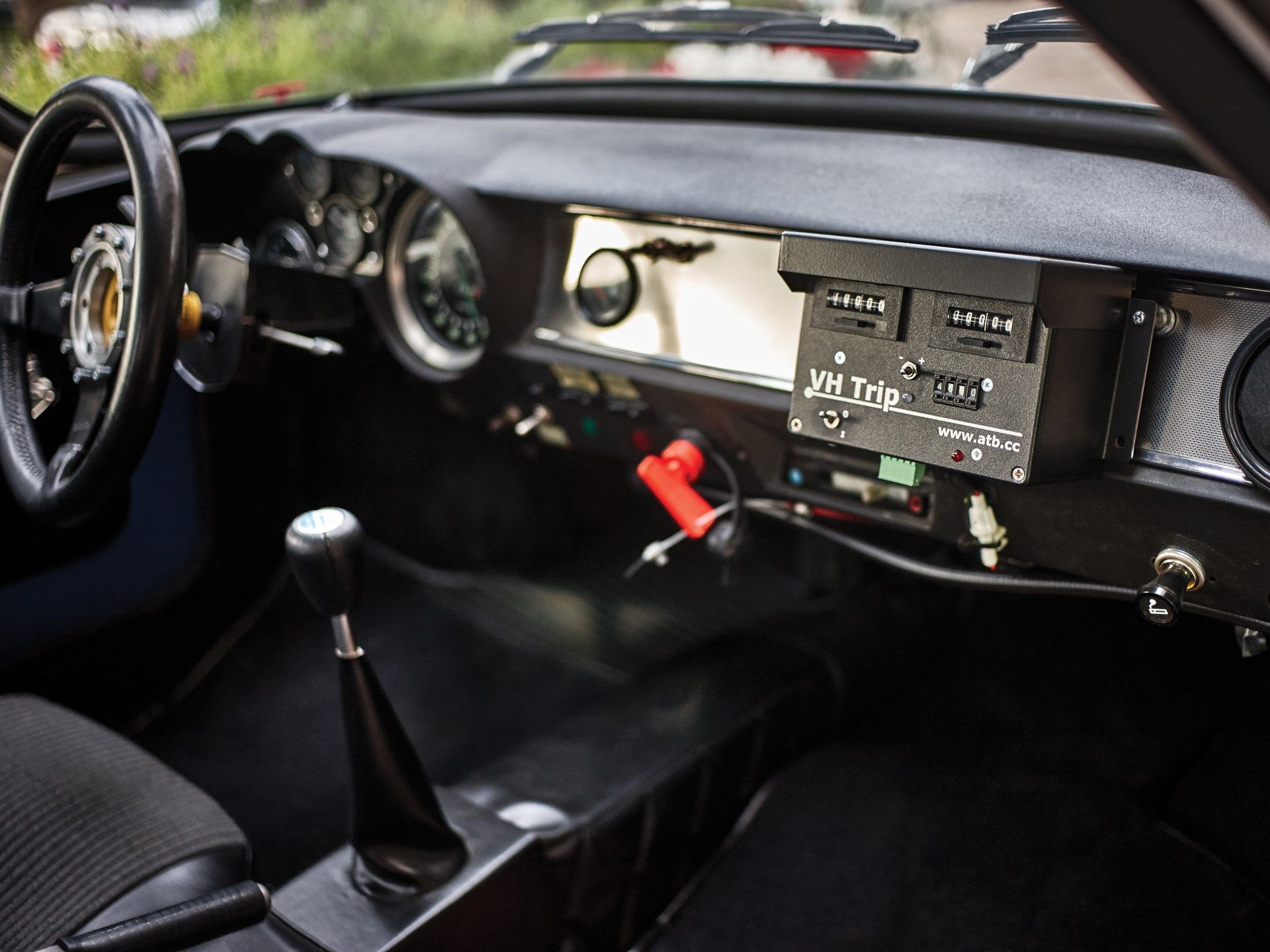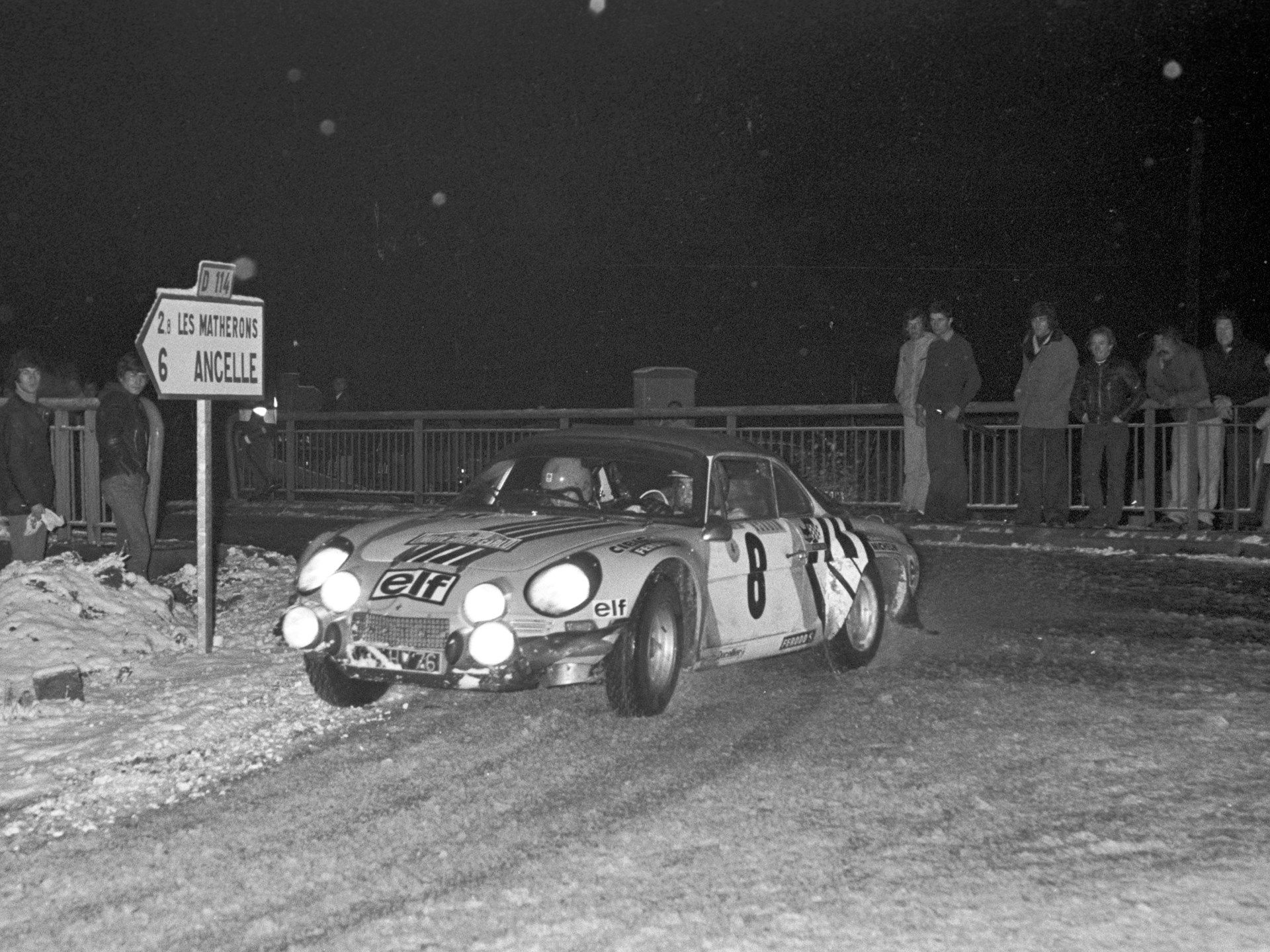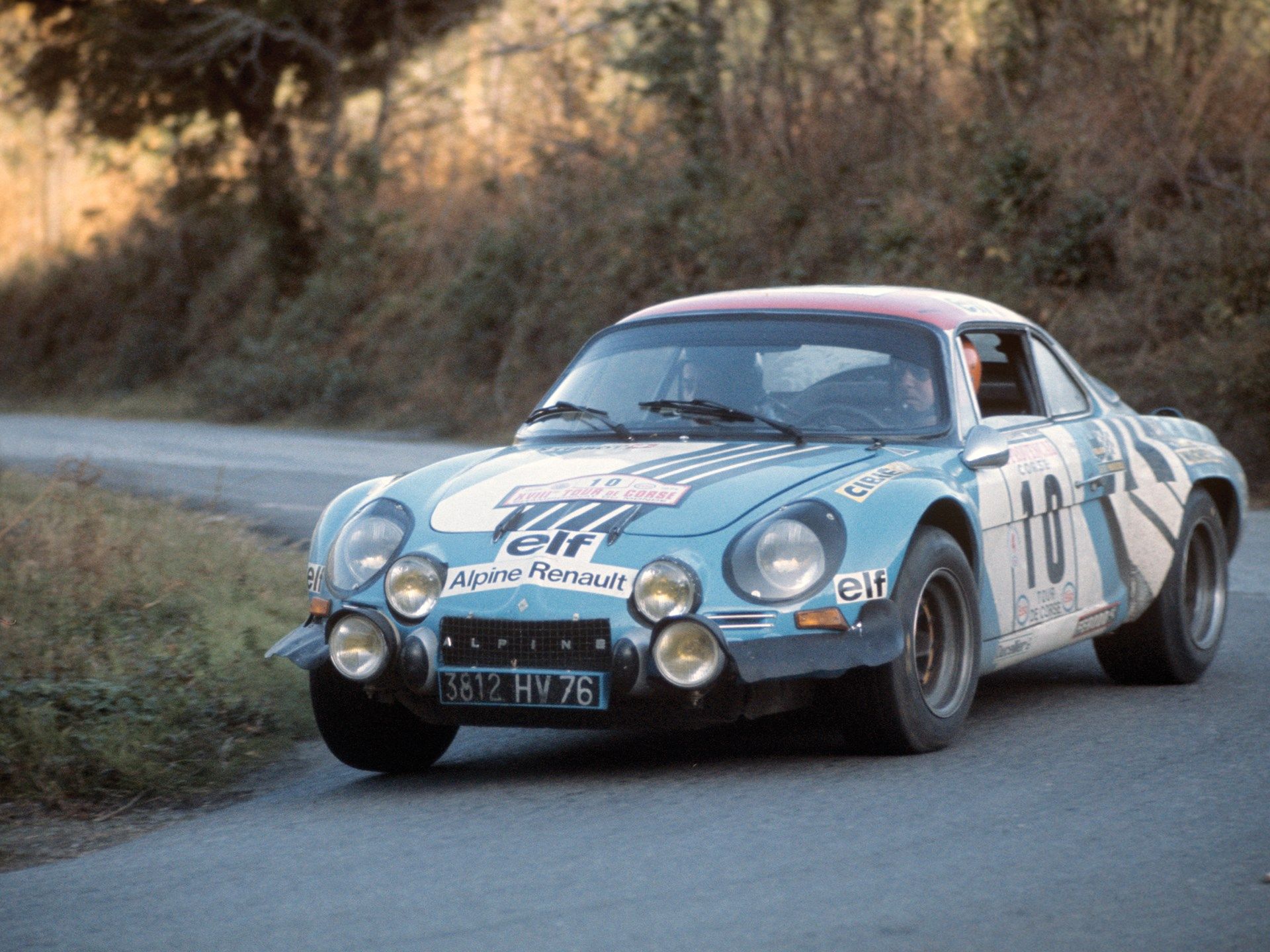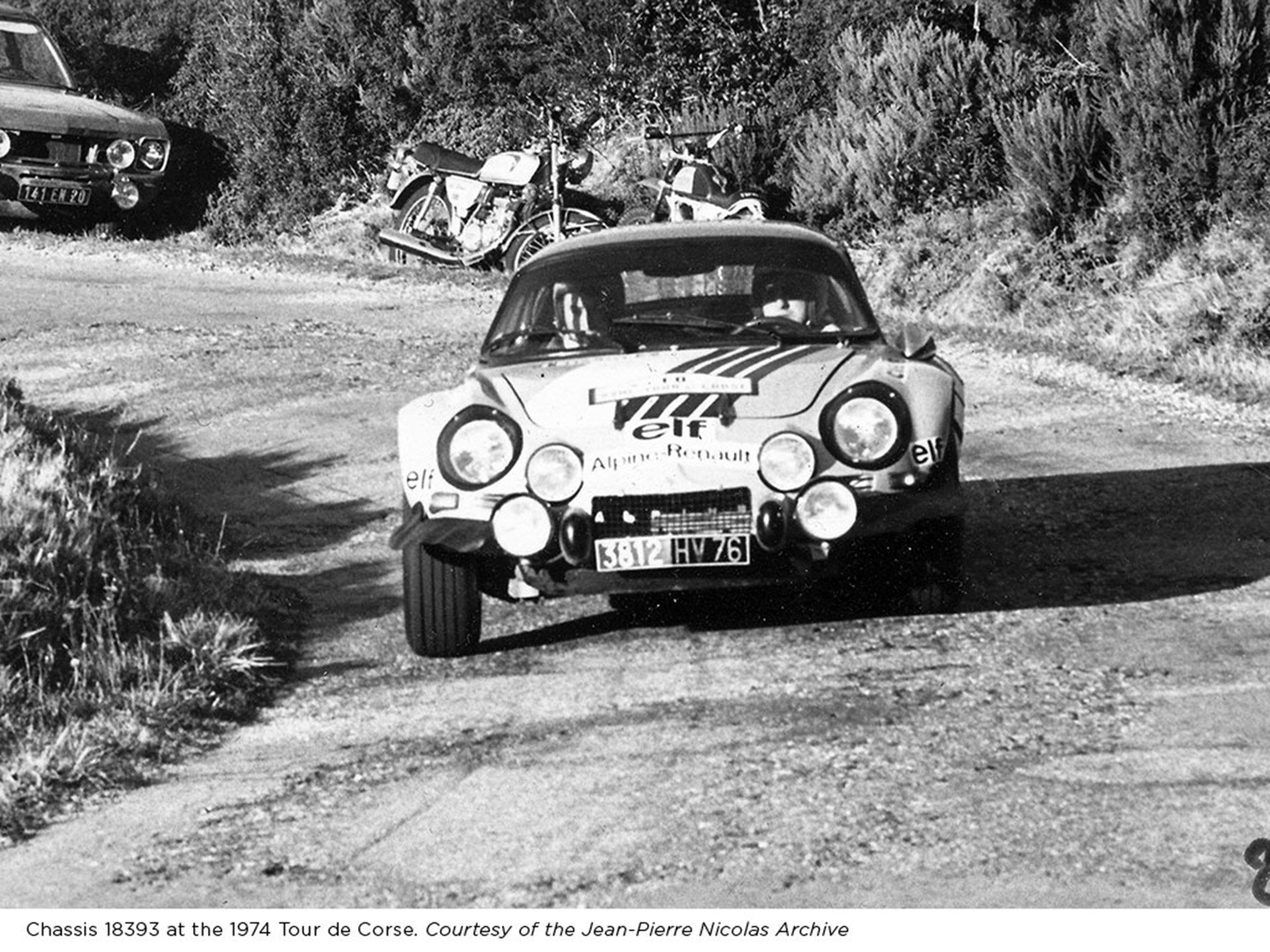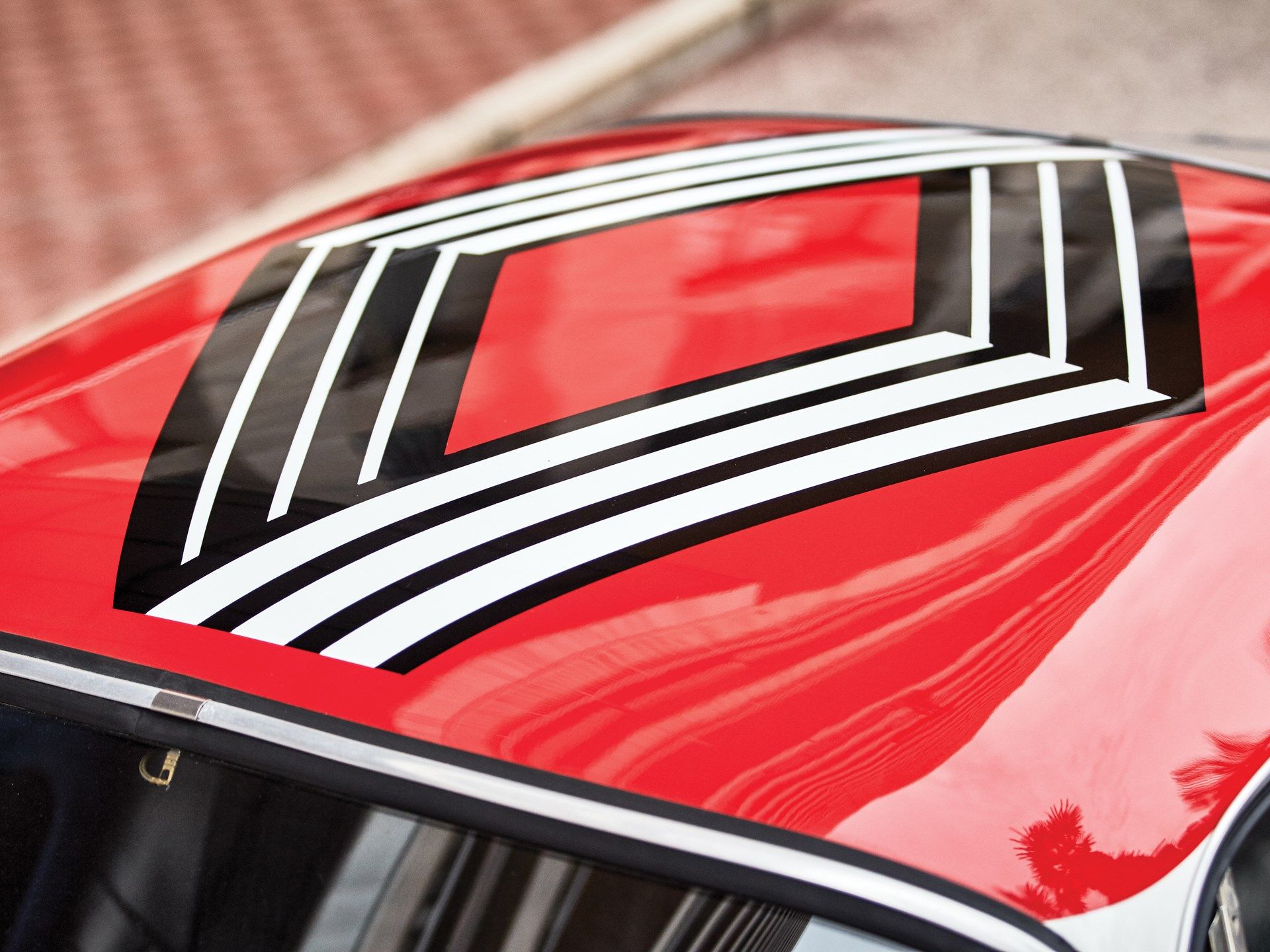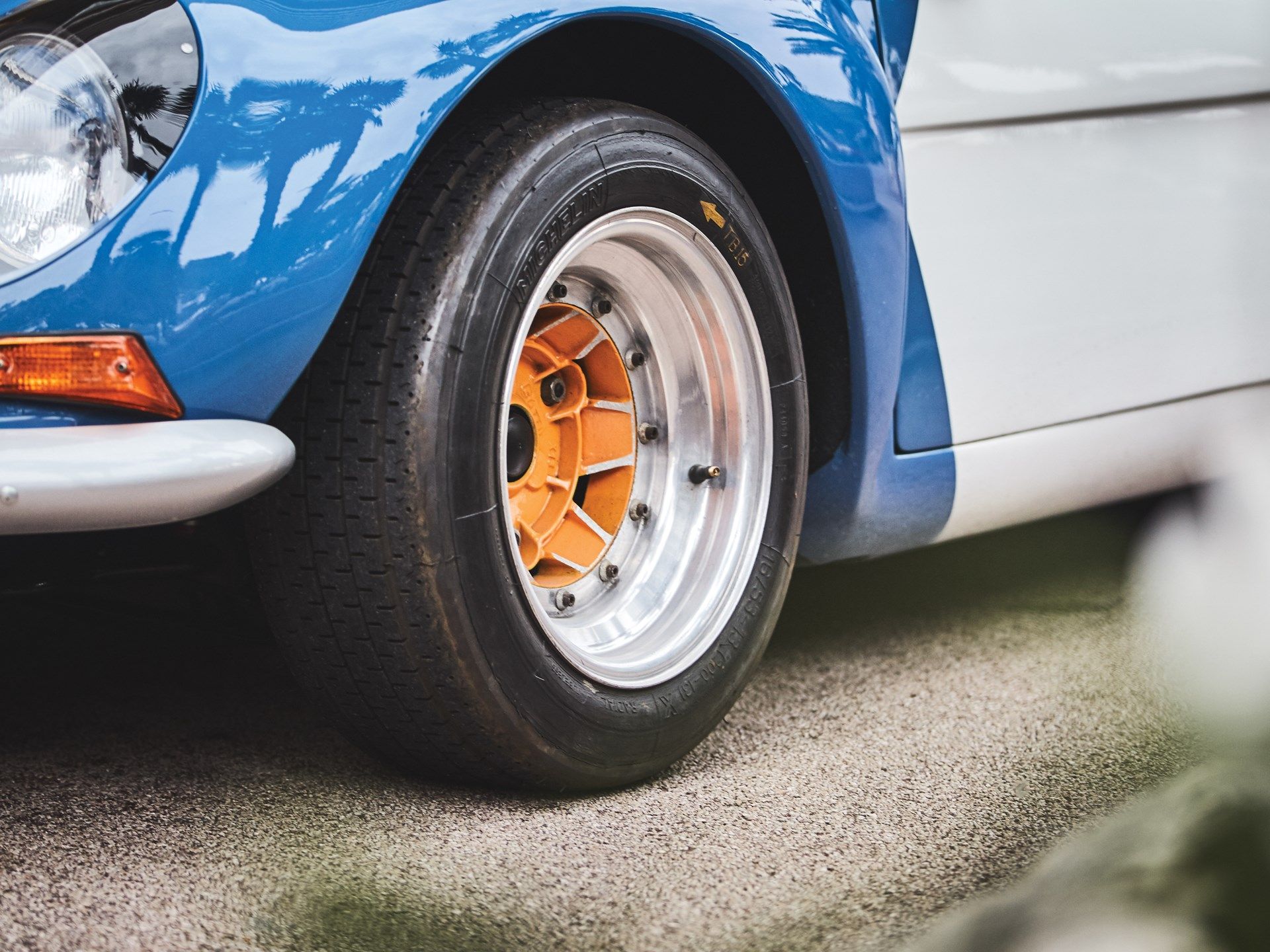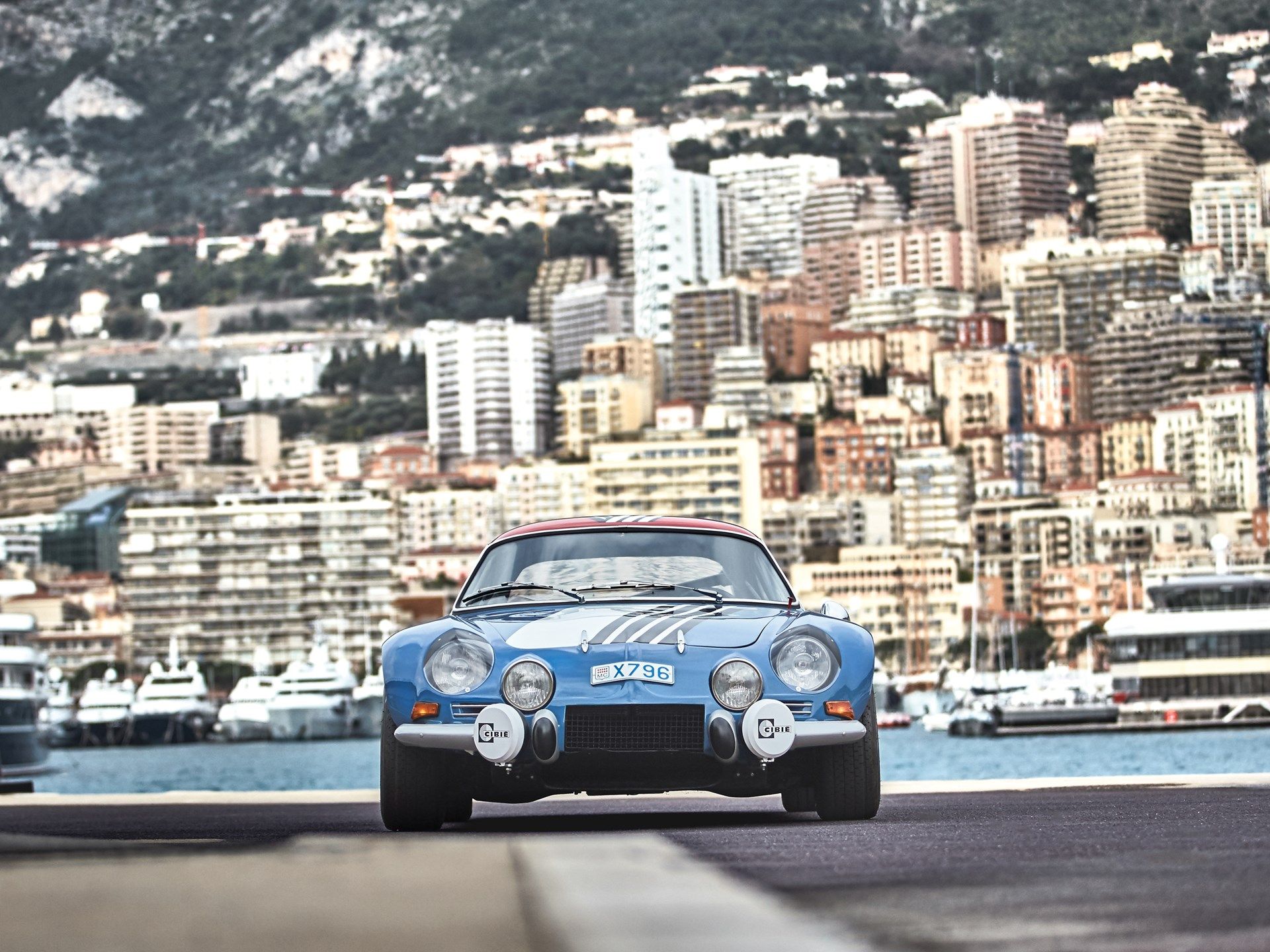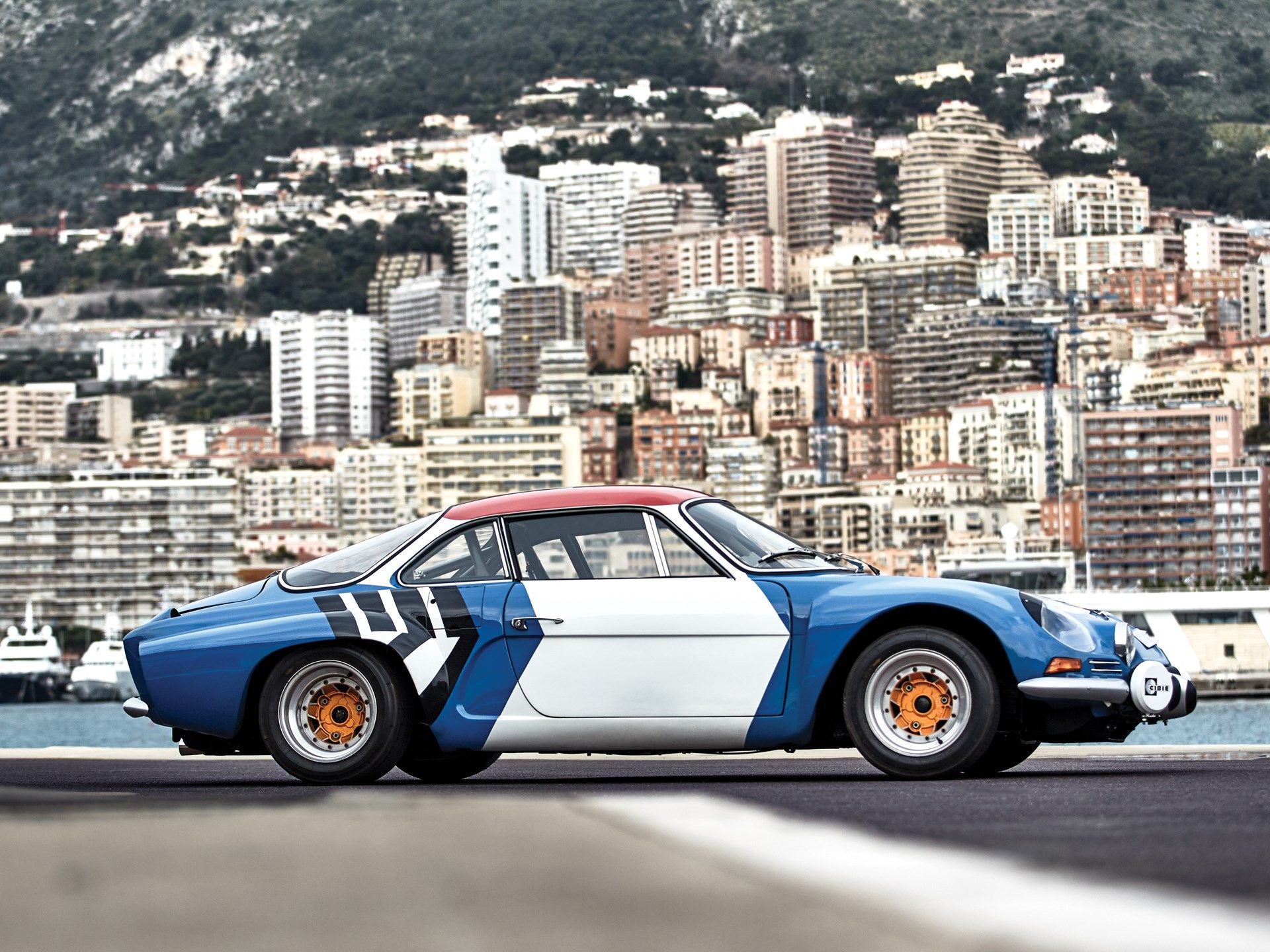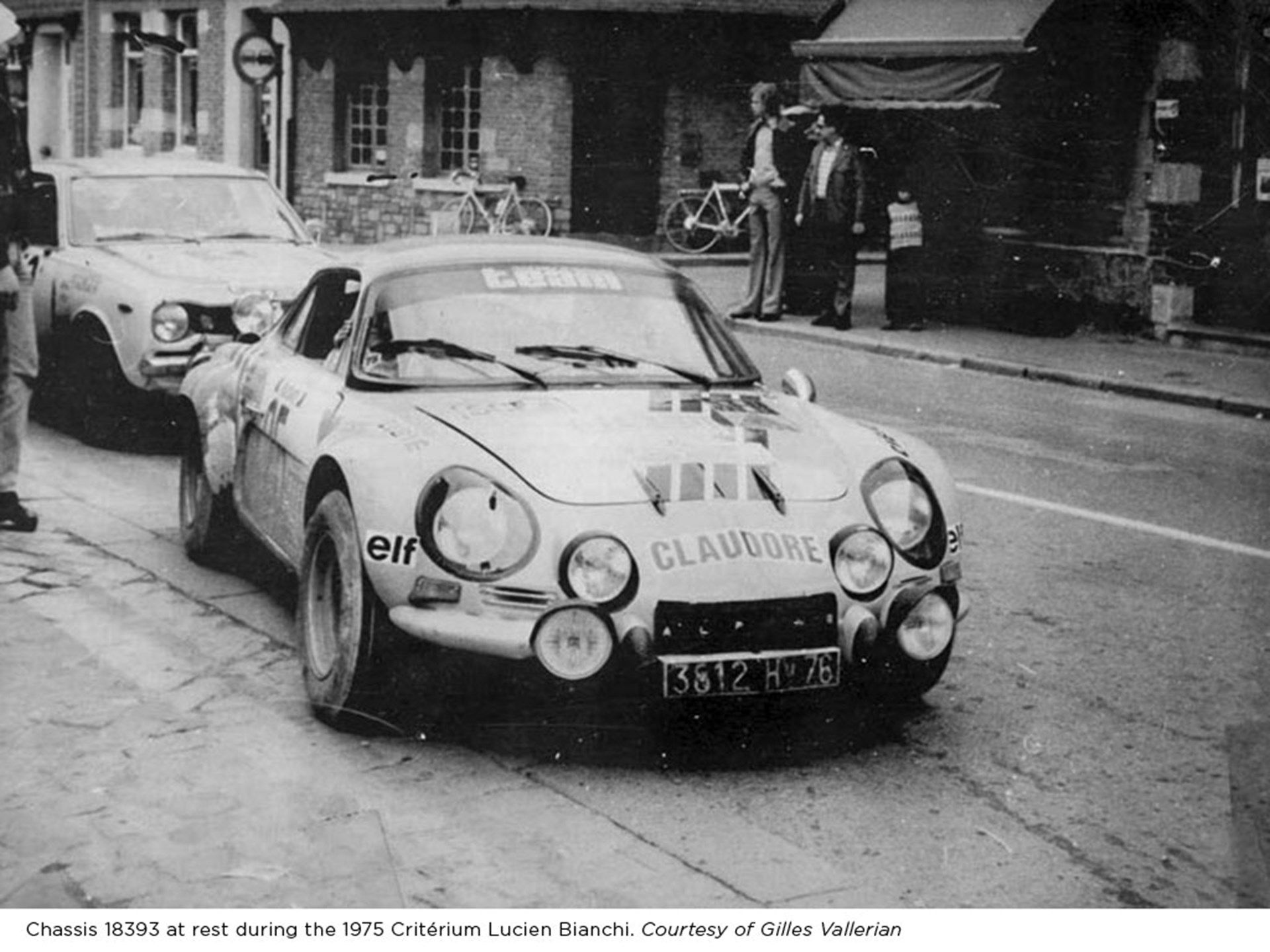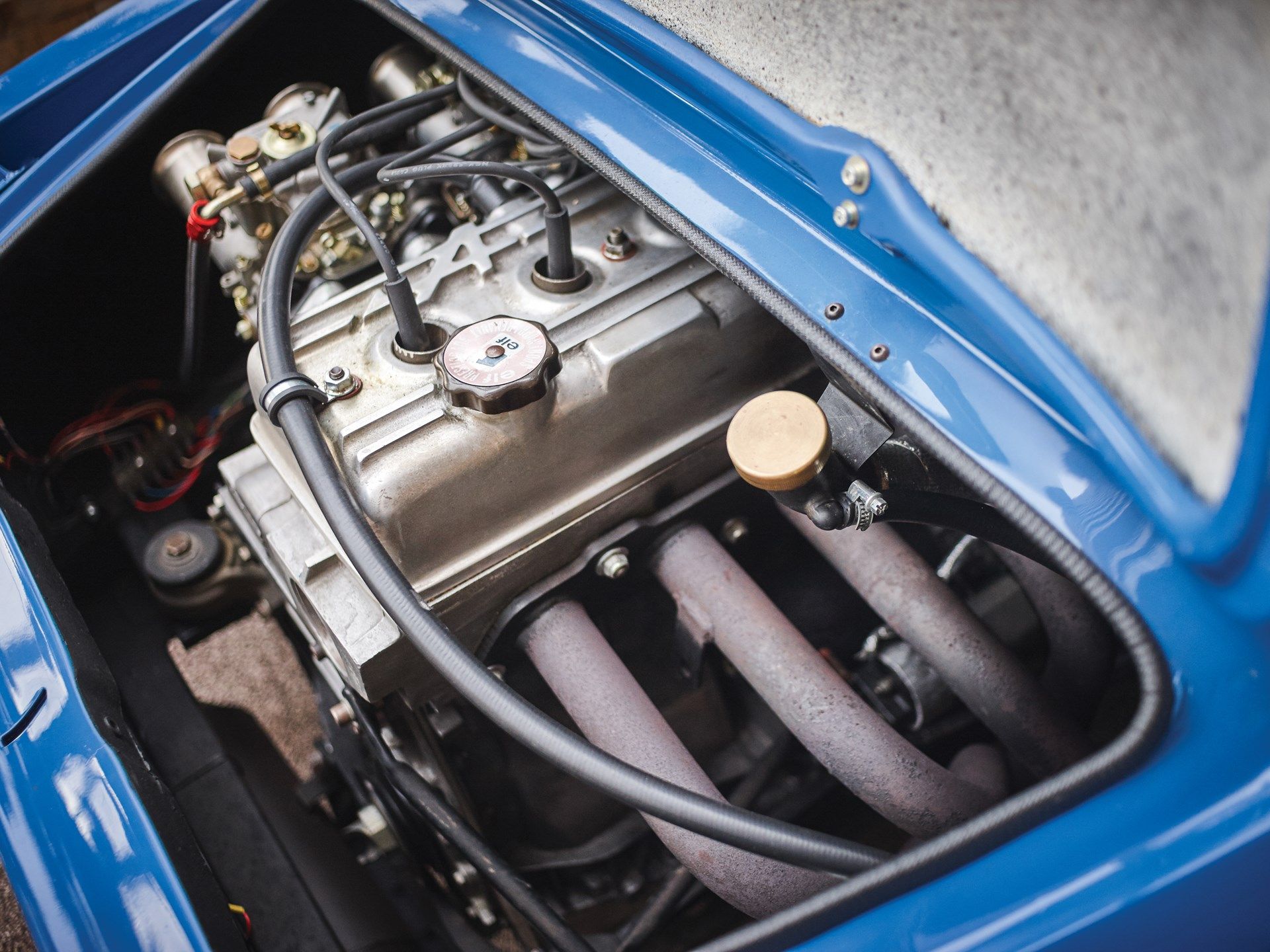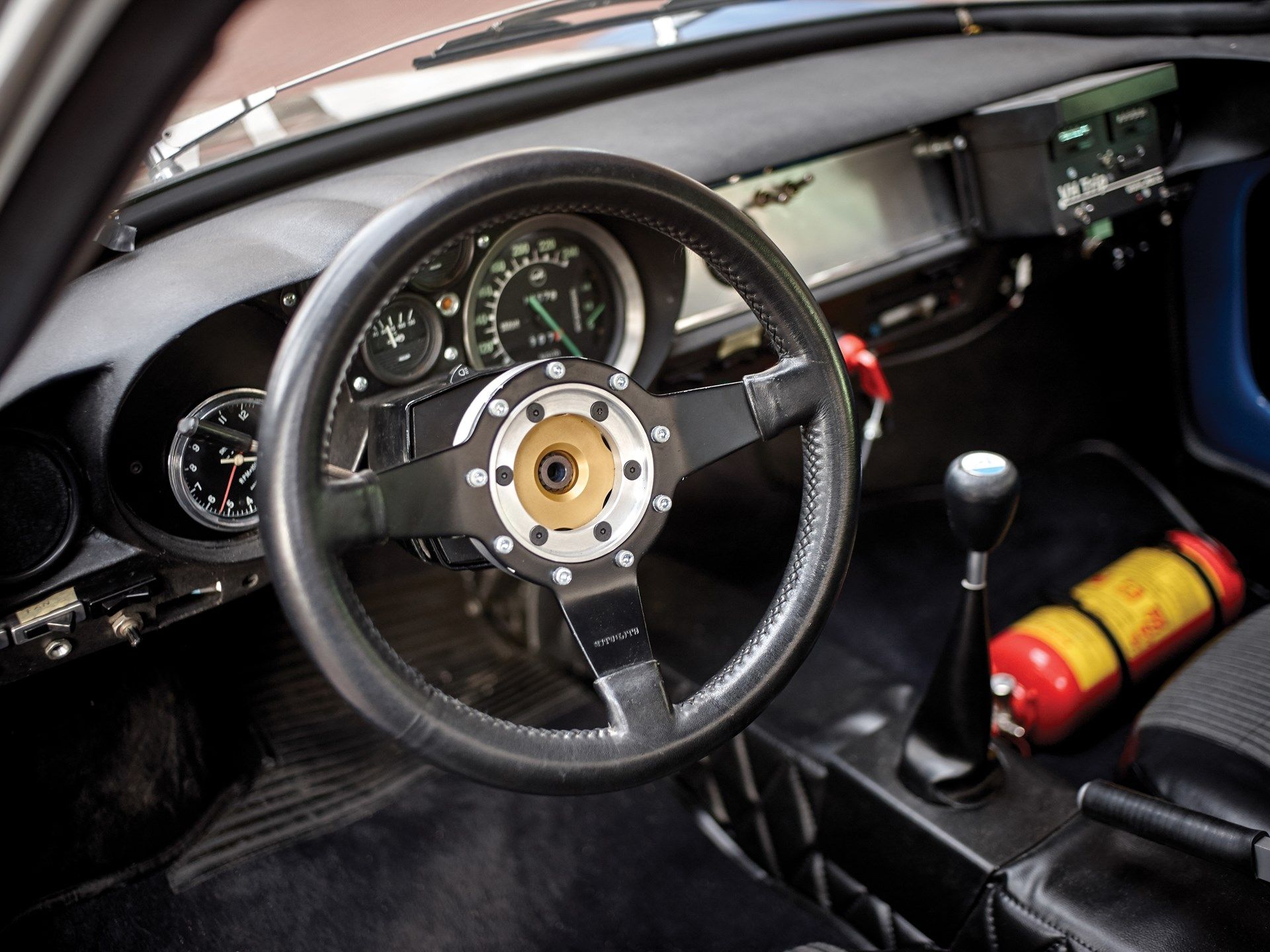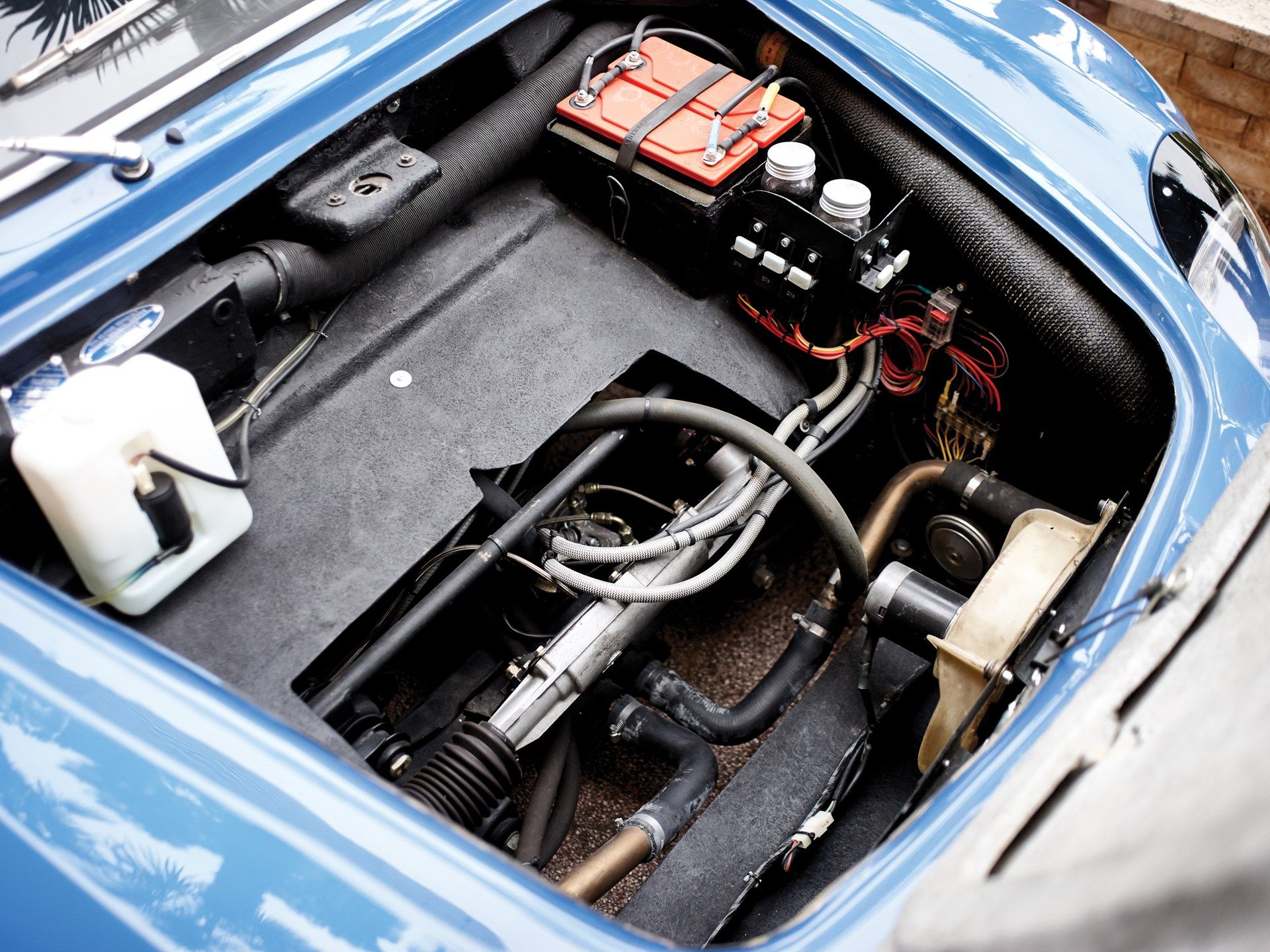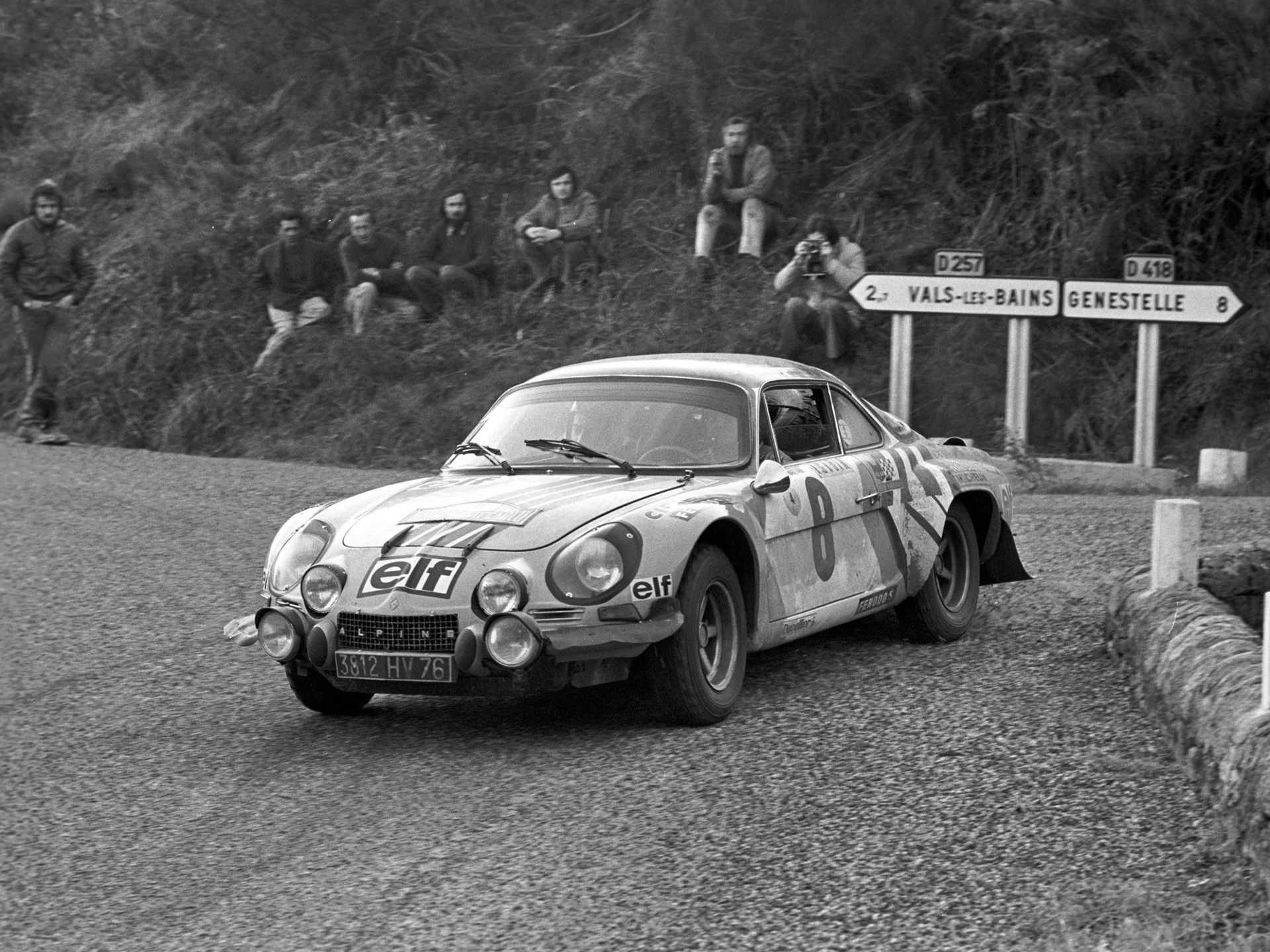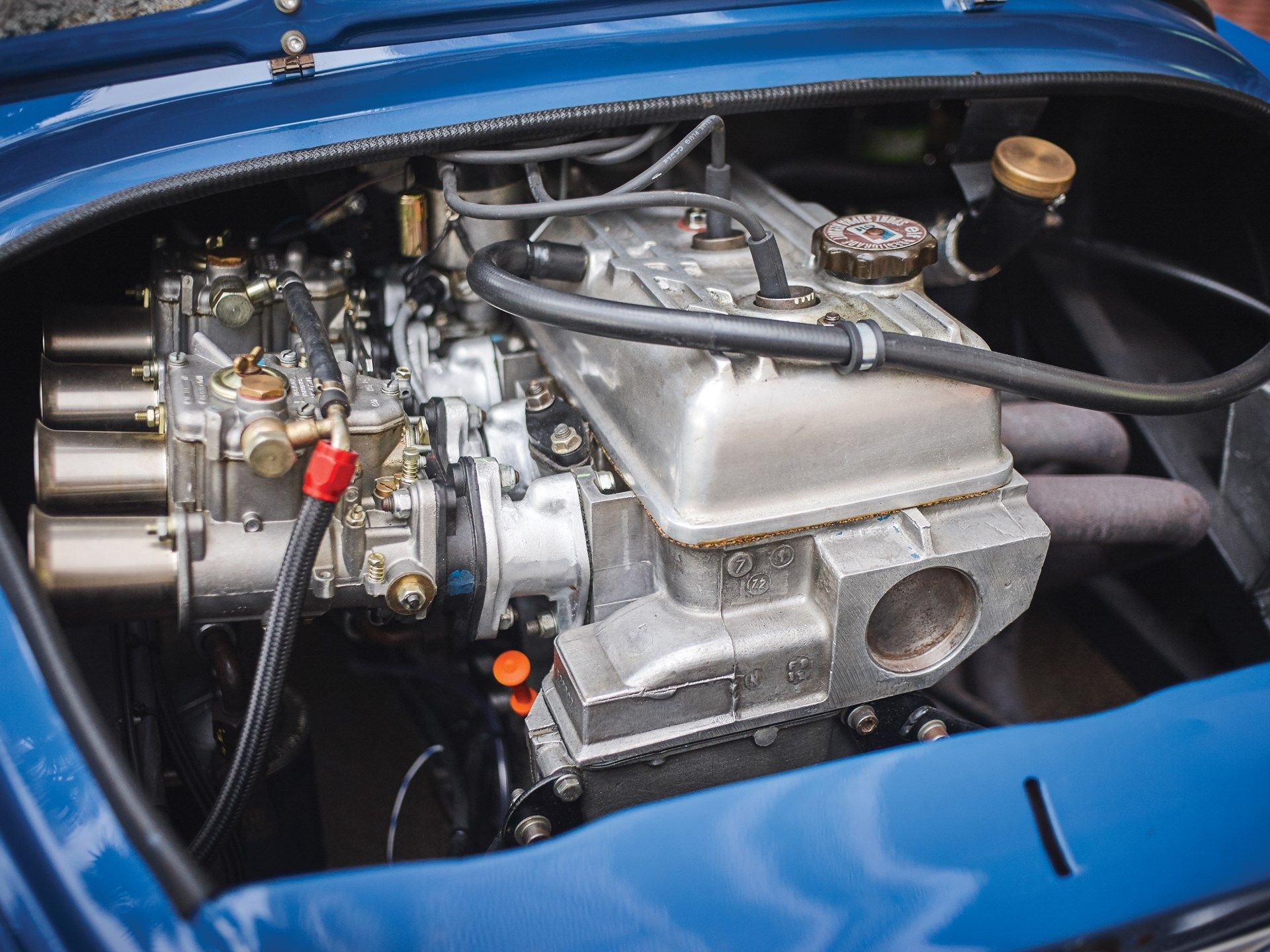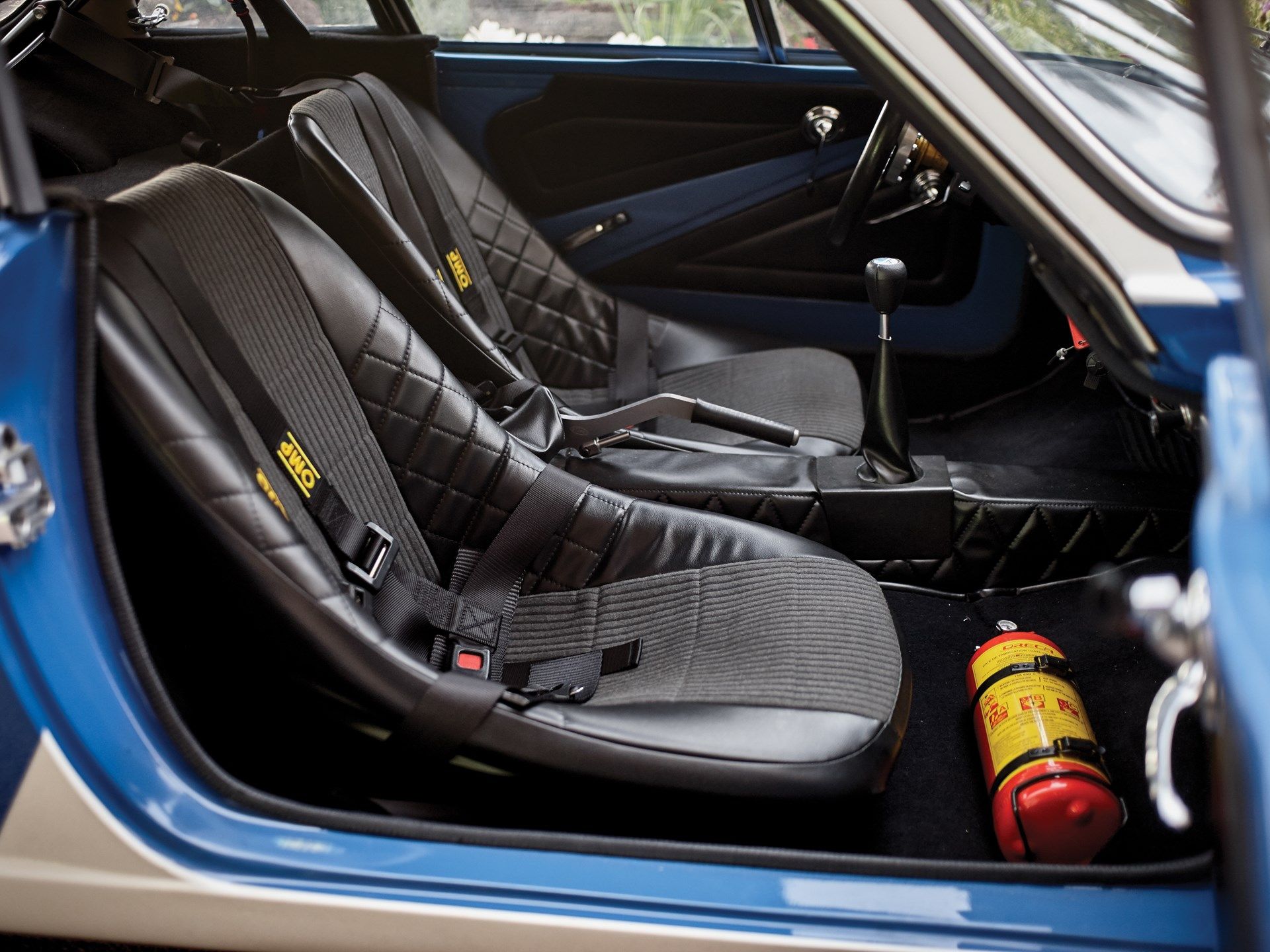The Renault-Alpine A110 is one of the most famous rally cars of the two-wheel-drive era. It reigned supreme in the days before the WRC became a thing and this, the 1800, built to Group 4 specifications, is the swansong of the A110 and ran in 1974 and 1975.
The original Alpine A110 was launched in 1961 as the successor of the A108 which shared parts with Renault's Dauphine. This time by, Paul Redele and his men relied on parts from the compact Renault 8 sedan. The car had a similar design to the A108, again with a rounded nose and straight-cut rear as well as bulbous headlights.
The A110, in its later versions, claimed numerous rally wins which made Alpine the 1971 champions in the International Championship for Manufacturers. This A110 was built for the 1974 season as one of only nine works-supported cars that year. It managed a best finish of second in the Tour De Corse but proved to be overwhelmed by the newly-homologated Lancia Stratos with its mid-engine configuration.
1974 Renault Alpine A110 1800 Group 4 Works
- Make: Array
- Model: 1974 Renault Alpine A110 1800 Group 4 Works
- [do not use] Vehicle Model: Array
1974 Renault Alpine A110 1800 Group 4 Works Exterior
The Alpine A110 is undoubtedly the car most car fans associate with the brand when they hear about it. And this is the way most of those folks picture it in their heads: wide, with small rims hugged by thick rally tires, with four headlights sticking from the rounded nose section, and the engine hanging at the tail end. But this is now the way the A110 always looked.
The first Alpines began racing in the Group 4 category as early as 1966, but it wasn't until the dawn of the '70s that they achieved success. By then, the Alpine came standard with four headlights up front and was getting wider by the minute. Between 1970 and 1974, the Alpine managed to do what no Renault car could achieve: finish 1st, 2nd, and 3rd in the Monte-Carlo Rally two times. It also won the International Championship for Manufacturers, the forerunner of the WRC, in 1971.
The car you see here is the last evolution of the Alpine. It was fitted with a Renault-sourced 1.8-liter inline-4 engine and a very wide fiberglass body with plastic bumpers.
Up front, you'll notice the classic 4-headlight setup which was introduced all the way back in 1968. The two inner lights sit lower than the main ones that are placed on the fenders. This example also has two more Cibie fog lights attached to the two-piece plastic bumpers. The separate vertical shock absorbers sit on either side of the inlet which directs air to the oil cooler which is placed under the front hood.
From the side, you'll easily notice the character line that runs horizontally down the car's doors and forms a C shape before the rear wheel well. The low roofline is also visible thanks to the fact that the roof itself was mostly colored in red. It's interesting to note that the chromed accents on the window frames have been kept.
The Alpine A110 1800 is fitted with a set of multi-piece alloys with a yellow center. Lastly, the side view makes it easy to notice the forward-facing air snorkels that open towards the trailing edge of the rear bodywork.
At the back, the car has no cuts through the light bodywork to allow air to come out. What you will be able to appreciate from here is how round the rear fenders are and how big the wraparound rear window really is. On the rear hood, the Alpine-Renault badging is crossed by a thin line. As is the case up front, a couple of plastic bumpers complete the look. The angular taillights look tiny on this widened version. Also, you can't miss the camber of the rear wheels. It's full of purpose on this one, though, nothing to do with 'stance.'
1974 Renault Alpine A110 1800 Group 4 Works Exterior Dimensions:
|
Length: |
151.4 inches |
|
Width: |
65.0 inches |
|
Height: |
44.5 inches |
|
Wheelbase: |
82.7 inches |
1974 Renault Alpine A110 1800 Group 4 Works Interior
The interior of this A110 is as spartan as you'd expect it to be. You only get the bare essentials you need to navigate through a rally stage.
In front of you, there's a rather small three-spoke steering wheel which sits in front of a crowded gauge cluster. You've got the odometer on the right-hand side and then, unusually small in size, the tachometer on the left. In fact, the tachometer is so small it doesn't fill the gap of the molded dash panel. There are also three more even smaller gauges in between the main two: one for oil temperature, another that shows you your oil's pressure and another for water temperature.
The so-called center console is pretty much bare. You got a few knobs, switches and another gauge and that's about it. Then, your co-pilot has to work with an ATB system that counts the miles you've already covered and tells you the time that has elapsed. This is not a period-correct appliance, but it's necessary if you want to use this car in modern-day regularity rallies.
The gear shifter and the handbrake are located in between the seats on the transmission tunnel which is wrapped in leather as well. The shifter is quite tall with a black elongated knob at the top end.
1974 Renault Alpine A110 1800 Group 4 Works Drivetrain
Alpine went to great lengths to keep the A110 relevant into the mid-'70s. For example, on this 1974 works car, the front chassis has been reinforced, and it features underbody protection since most of the rallies back then were on gravel and dirt. That's why even the air intake in the nose was modified and moved so that it wouldn't get jammed with rocks, dirt or even snow. The car also has an even lighter body than a standard Alpine A110 1600 road car which means that, even with the bigger engine hanging out the back, this rally car only weighs about 1,700 pounds.
The engine, which puts out about 176 horsepower at 7,200 rpm and 143.8 pound-feet of torque at 5,000 rpm, is fed via two Weber 45 DCOE carburetors and is water-cooled. The power reaches the back wheels via a 5-speed transmission working with a dry single-plate clutch.
Suspension on the Alpine is by double wishbones with coil springs, dampers, and an anti-roll bar at the front while a Renault Swing Axles with longitudinal radius arms holds the coil springs, dampers and single anti-roll bar at the rear.
The car is fitted with a centrally-mounted aviation-style fuel tank but, still, most of the weight is at the back with a weight distribution of 36:64. Steering is by rack and pinion.
1974 Renault Alpine A110 1800 Group 4 Works Specifications:
|
Engine: Gordini 807-GA DOHC 8-valve N/A 1.8-liter straight-4, longitudinally-mounted behind the rear axle |
|
|
Compression ratio: 11.5:1 |
|
|
Output: |
176 HP @ 7,200 RPM |
|
Torque |
143 LB-FT @ 5,000 RPM |
|
Fuel feed: |
Two Weber 45 DCOE carburetors, water cooled |
|
Drive: |
Rear-wheel drive |
|
Gearbox: |
Alpine 364, 5-speed manual gearbox with a dry single-plate clutch |
|
Suspension: |
Independent up front with double wishbones, coil springs, dampers, and an anti-roll bar and featuring a Renault swing axle with longitudinal radius arms, coil springs, dampers and a single anti-roll bar at the rear |
|
Steering: |
rack-and-pinion |
1974 Renault Alpine A110 1800 Group 4 Works Pricing
Genuine ex-Works Alpine-Renaults are expensive to by and they aren't often seen at public auctions. That's why this example had a price estimate of anywhere between $272,000 and $318,000.
Granted, this is an example with a storied past. It is one of only nine works-prepared cars that tackled the 1974 WRC season. According to RM/Sotheby's, the car, chassis #18393, debuted in late 1974 as one of the five final rally Alpines assembled at the Dieppe plant. The car's debut was set for the Tour De Corse where it was driven by Jean-Pierre Nicolas.
Indeed, Nicolas and co-pilot Vincent Laverne went on to finish second in the Tour De Corse after leading early in the rally only to be overwhelmed in the second day by Jean-Claude Andruet and his unstoppable Stratos. However, Nicolas successfully finished over one minute ahead of a newer Alpine A310 which completed the overall podium.
The car was back on the special stages in 1975 when Nicolas took on the challenge of the Monte-Carlo Rally. The Frenchman had amassed loads of miles around Monte Carlo and would go on to win the rally outright three years down the line. Nicolas was running second in this Alpine when he and his co-pilot Laverne retired during the 12th special stage. After this event, the car was leased to Maurice Mercier who used it in the Criterium Lucien Bianchi rally. Mercier finished fourth, and the car again found its way to another tamer, one Michel Alibelli - France's national rally champion in 1972. Alibelli came home second overall in the Rallye Du Mont Blanc.
The car was back in Jean-Pierre Nicolas' hands for the Criterium Alpine rally, and the Frenchman duly won in spite of serious opposition from the likes of Jean-Claude Andruet or Bernard Darniche. Sadly, the last two rallies in the competitive career of chassis #18393 ended with retirements. Francis Vincent did not finish the Ronde Cevenole due to gearbox trouble before Jacques Henry retired mid-way through that year's Rally d'Antibes from the lead.
1974 Renault Alpine A110 1800 Group 4 Works Competition
Fiat-Abarth 124
The Fiat 124 Spider debuted at the 1966 Torino Auto Show, and Abarth quickly got to work creating a quicker version. It gained quite some notoriety in the late '60s, but it wasn't until 1972 that Fiat-Abarth entered the 124 Spider in the WRC as a works outfit. Beforehand, Fiat was mangled with Lancia, and the latter were the ones racing officially with the HF team campaigning the Fulvia and gathering multiple wins.
The 1972 version, which soldiered on for a few years, was fully homologated to Group 4 regulations and had 1.8-liter engine, independent suspension, and an aluminum body shell. By 1974, the 1.8-liter N/A unit was able to fit 16 valves, and the power grew to 212 horsepower. The works team dominated that year's Portuguese Rally en-route to finishing second again in the Manufacturer's Trophy.
Ford Escort RS1600
A product of the Ford Advanced Vehicle Operations team, the RS1600 was one of the most successful rally cars of the late '60s and early '70s. By 1974, however, it was getting quite old, and Ford actually realized that by introducing that same year the second-generation Escort. However, the original was still able to win two WRC rounds that year - the 1,000 Lakes Rally in Finland and the RAC Rally Great Britain. It was enough to see Ford third in the Manufacturer's Trophy at year's end.
Originally, the racing Escort came with a Twin-Cam (TC) engine which traced back its origins to the Lotus-tuned Cortinas of the '60s. It was an 8-valve twin-camshaft 1.6-liter unit, but it was built to Group 2 regulations. That's why, a bit later on, Cosworth developed the first BDA 1.6-liter unit which was followed soon enough by a 1.8-liter unit which was good enough for over 210 horsepower. It was with that kind of power, sent to the back wheels, that drivers like Timo Makinen or Hannu Mikkola were able to beat Fiat, Lancia, Alpine-Renault and all the others in the '70s. It wasn't, though, enough for Ford to become WRC champions.
Conclusion
The Alpine-Renault A110 1800 is a legendary automobile. The Alpine factory's most successful racing car which bettered any original Renault product at the time. Its styling is unmistakable and the fact that it's still popular in historic rallying to this day proves that its core strengths are relevant now as much as they were back in 1974.
This model, one of the last few built and campaigned by the works team, is an example of the constant struggle to keep up with the competition in racing. Sadly, the Alpine couldn't keep up with the purpose-built Stratos and, indeed, no other Alpine car ever enjoyed the spell of success that the A110 went through.
Further reading
Read our full review on the 2018 Alpine A110.
Read our full review on the 1961 - 1973 Renault Alpine A110.
Read our full speculative review on the 2020 Renault Alpine Convertible.

